I’d often wondered about Shoreham. It’s famous as the inspiration for many of Samuel Palmer’s bucolic paintings, but on the map it’s surrounded by motorways, an edgeland bordered by the M20, the M25 and the M26. I suppose I’d worried that it’s spell must have been broken. But then after a recent visit to Ankerwycke, also on the rim of the M25, I realised that magic can persist.
Within minutes of leaving the motorway we were suddenly deep in the Kent countryside. The high speed traffic of the London Orbital was quickly forgotten as we entered another dreamworld. From the station carpark we walked under the railway bridge and down the hill to follow a different circuit.
It was springtime and the birds were busy everywhere. I’d once read an observation of a songbird hidden in a tree that went something like – and the birdsong filled the tree and the shape of the song was the same as the shape of the tree – but I can’t remember who said it. Maybe it was Samuel Palmer or possibly William Blake, or perhaps more likely it was Cecil Collins. But, no matter who it was, it perfectly describes the urgent, bubbling sounds of the birds in these awakening trees.
We crossed the golf course and passed the 11th tee (eleventh tree, elven tree, Tolkein’s Shire tree).
Along the river to the ford and over the footbridge, all the while looking through Palmer’s eyes.
Moonlit Scene with a Winding River
Then a steep climb up from the valley below to the heights of Meenfield Woods, and from beyond the crest of the hill, the faintly discernible but familiar drone of the M25 motorway.
Closing on the M25, by Lime Pit Lane, we pass Morant’s Court Farm. This was where London carters, coming out of town through Bromley, dropped Samuel Palmer’s visitors: the Ancients, John Linnell, William and Catherine Blake… The delusion persists: the Valley of Vision, Earthly Paradise, is a one-day walk from London. A few hours, drudging through industrial dereliction, suburbs, captured villages, will carry the walker into Arcadia. Or, at worst, the town dweller’s version of it. The dream. Linnell, broken in health, vexed by his large family, wrote to Palmer: ‘I have found so much benefit from my short visit to your valley… I Dream of being there every night almost and when I wake it is some time before I recollect that I am in Bayswater’… The Valley of Vision was a Tuscany for weekend runaways in search of the Simple Life…
It’s late April and the woods are awash with bluebells – a sea of blue as far as the eye can see.
And then down there below us we catch our first sight of the village of Shoreham.
It comes as a shock to find Shoreham where it is, so close to London… I’d always assumed that Palmer’s Shoreham was hidden among the South Downs: that Shoreham was in fact the Sussex Shoreham, Shoreham-by-Sea. Domesticated, after the Bloomsbury style, with a touch of Eric Gill’s community at Ditchling. A morning’s drive away. Shoreham was an exportable fable, an idyll; suspect, fraudulent, magical. Fixed at the equinox.
Nothing of the sort. Shoreham rubs shoulders with the Swanley interchange, with Brand’s Hatch, Orpington. Shoreham is just a wheel-spin off the M25. Staying on the road, you don’t notice it. It doesn’t register. No theme park, no shopping mall, no imprisoned animals.
In Palmer’s steep, sacred Shoreham fields the wheat stood tall, like the thick rippling pelt of a creature sleeping under the woods. In an ink-and-sepia drawing of 1825 a man in Jacobean dress, perhaps Bunyan’s Christian, lay in such a field, cheek on hand, reading the Psalms; wheat clustered around him to give grave illumination, as if the stalks were heavy-headed acolytes with candles in their hands. In Palmer’s drawings and watercolours wheat waited in stalk or sheaf alongside human activity, each stalk the height of a man, a silent and burnished congregation of souls; in one watercolour a rustic church was walled with fiery wheat, with a wattle door standing open. At dawn wheat was erect, alert, cheering on a smocked and vigorous young man heaving harness on an ox; at dusk the sheaves, like men and women, leaned on one another for weariness. Wheatfields under sunlight or moonlight lay hallowed, with the Host-orb hovering over them; and their reapers or gleaners became angels, but that is another story.
Palmer drew wheat and barley in exquisite detail, in pencil and watercolour on tinted paper. Elaborate notes on how light transformed them were written down alongside. He drew out in the field, his battered sun-hat (big as a parasol) the colour of dried straw, the pockets of his spreading brown drawing-coat stuffed with chalks, palettes, sketchbooks, knives, his ‘little Milton’ brass-bound at the corners, torn envelopes, his snuffbox and, at one dangerous stage, bottles of egg yolk to make tempera. Through his round, scratched glasses – the sort, he lamented, that did not attract the ladies, disguising as they did ‘the darting artillery of my eyes’ – he once saw a thin golden halo round an ear of wheat, where the transparent husk stood against the sunset. He noted the reds and ambers in it, struck out of it with prismatic intensity by the sun. And this, too, he tried to paint. Individual ears of wheat, mere diamond-pricks of paint, were often the brightest element in his landscapes.
We were here too soon to witness numinous fields of corn
but just in time to catch the luminous flowers of blackthorn.
It struck me then that perhaps this walk would’ve been better taken later, between May and August, in the bloom of summer and harvest time, Palmer’s preferred season. His paintings are teeming with the full blown richness and bounty of the countryside. It seemed like we’d arrived just before kick off.
Too early for the blossom trees, and the horse chestnut candles were yet to bloom.
Pastoral with a Horse-chestnut
Ivy Cottage, Shoreham
But as in a long sultry walk we choose out shady places now and then, to sit down in, so I think none will agonize so effectually as those who take the mental bath and balsam of a little daily leisure. Blessed thoughts and visions haunt the stillness and twilight of the soul; and one of the great arts of life is the manufacturing of this stillness.
Samuel Palmer in a letter to George Richmond
The Paintings of Samuel Palmer: Raymond Lister
Ivy Cottage still stands on Church Street, just up the road from a deliciously aromatic rosemary hedge, a nice appetiser before lunch at Ye Olde George Inn.
Samuel Palmer was one of the greatest landscape painters and etchers in the English tradition… He is known nowadays chiefly for the paintings he did as a young man, from the mid 1820s to the mid 1830s, and these are generally thought to be his best… Palmer was born at five o’clock in the morning on 27 January 1805 at his parents’ home in Surrey Square, in the area of Bedford Square and the Old Kent Road in south London… Later… on long walks in the countryside, particularly in the area between Greenwich Park and Dulwich… became to him ‘the Gate into the World of Vision’.
It is not known how Palmer first heard of Shoreham, but it was probably through his father… in the spring of 1826… he moved in. It was not an attractive property and became known to the Ancients as ‘Rat Abbey’… Palmer’s father… set up home in a pretty Queen Anne residence named Waterhouse beside the River Darent in Shoreham… Overflow guests from Rat Abbey were often accommodated at Waterhouse. For the next few years there was a constant stream of visitors to Shoreham – all of the Ancients, of course, especially (George) Richmond, who hired a room in the cottage of a farm labourer; Mr and Mrs (William) Blake, who came in a stage wagon; John Linnell, who on at least one occasion was pushed from the stage post down to the village in a wheelbarrow…
Here Palmer and his friends worked hard and played hard, producing some of the best work of their life, and reading to one another while they worked or while they sat in the cornfields at moonlight. The local inhabitants thought they were definitely cranky… and coined a particularly descriptive name for the young men, calling them ‘extollagers’. The heady and turbulent inspiration that the word seems to suggest well illustrates the state of Palmer’s muse at this time… This ardour is all reflected in the work Palmer was producing, in which the Shoreham landscape takes on a mysticism, an illumination rarely seen in the work of any other painter.
The Paintings of Samuel Palmer: Raymond Lister
We left the village via the churchyard, by the church porch made of a single upended oak.
※
Further down the Darent Valley we walked beside lavender fields, and once again we’d arrived too soon. They were not yet at their best. Better to come back in July to see them like this…
North Kent Lavender Field: Paul Finn
Darenth Valley Beehives: Paul Finn
We’d come to Lullingstone Country Park and followed the ‘Woodland Walk’ through Beechen Woods.
Writing this a month later, I imagine these trees now cloaked in a green shade of newborn leaves.
Lullingstone Park… formerly a medieval deer park on the western bank of the river Darnent, part of the estate and Manor of Lullingstone (also known as Lullingeston or Lolingestone)… it also contains some of the oldest oak trees in Britain.
These woods were also familiar to Samuel Palmer.
Oak Tree and Beech, Lullingstone Park
Lullingstone Park, which contains Lullingstone Castle, seat of the Hart Dyke family since 1500, is near Shoreham… Palmer made a number of watercolours of trees in the Park, this being one… In this work an enormous oak tree with wide-spreading branches dominates the foreground of the composition… Palmer’s preoccupation with texture is apparent throughout this work, but especially in the gnarled and rugged bole of the main tree, much of it realised by multiple repetition of little circles, dots and controlled scribbles, which now becomes a characteristic element of his technique. In this Palmer shows a particularly modern approach to drawing, akin even to some of Graham Sutherland’s studies of similar subjects.
The Paintings of Samuel Palmer: Raymond Lister
Ancient Trees, Lullingstone Park
Click on the image above for a closer look – it’s just a mess of beautiful scribbles!
Milton, by one epithet, draws an oak of the largest girth I ever saw; – Pine and Monumental Oak [Il Penseroso 1. 135]: I have just been trying to draw a large one in Lullingstone; but the Poet’s tree is huger than any in the park: there, the moss, and rifts, and barky furrows, and the mouldering grey, tho’ that adds majesty to the lord of forrests; mostly catch the eye before the grasp and grapple of the roots; the muscular belly and shoulders; the twisted sinews.
Samuel Palmer in a letter to John Linnell
The Paintings of Samuel Palmer: Raymond Lister
Then next we came upon this horse chestnut tree, its branches reaching out a full fifty feet or more towards the path, extending a hand of newly opened leaves, an irresistible invitation for us to enter.
Imagine this tree in summer, in full leaf – the perfect shelter, embraced in dancing light.
We end our circuit beneath this spinning merry-go-round tree
to return another day and go round again in a different season.



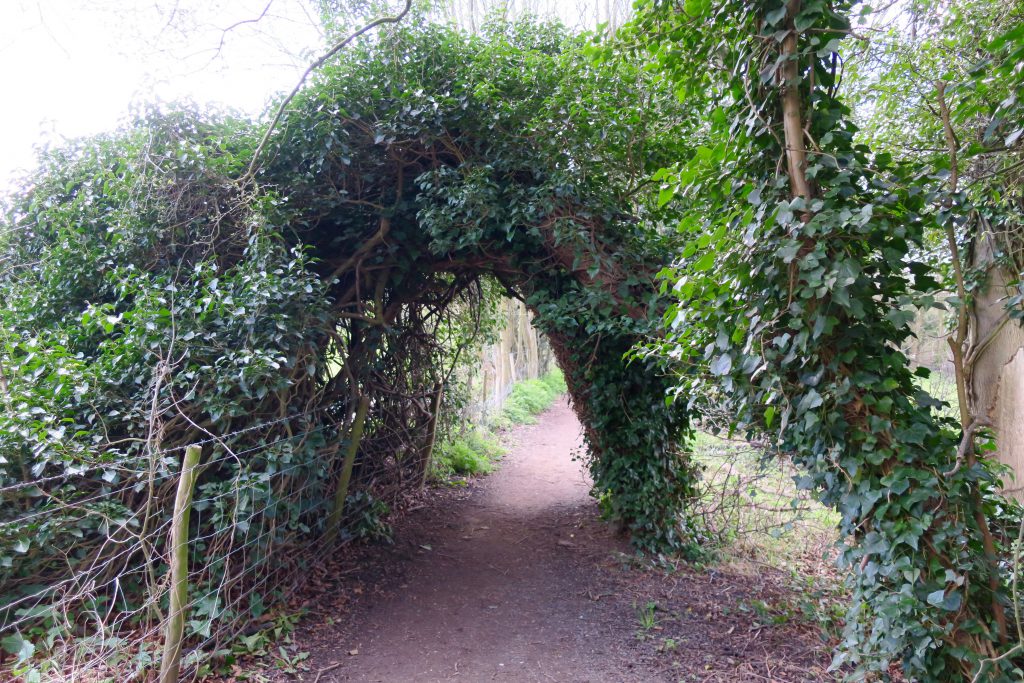
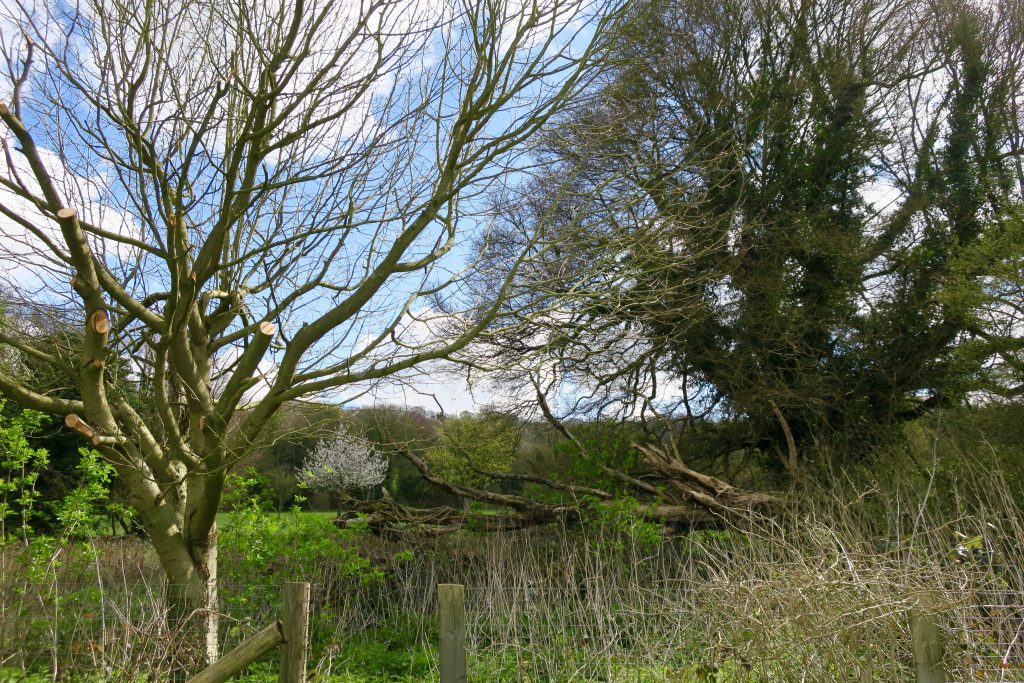
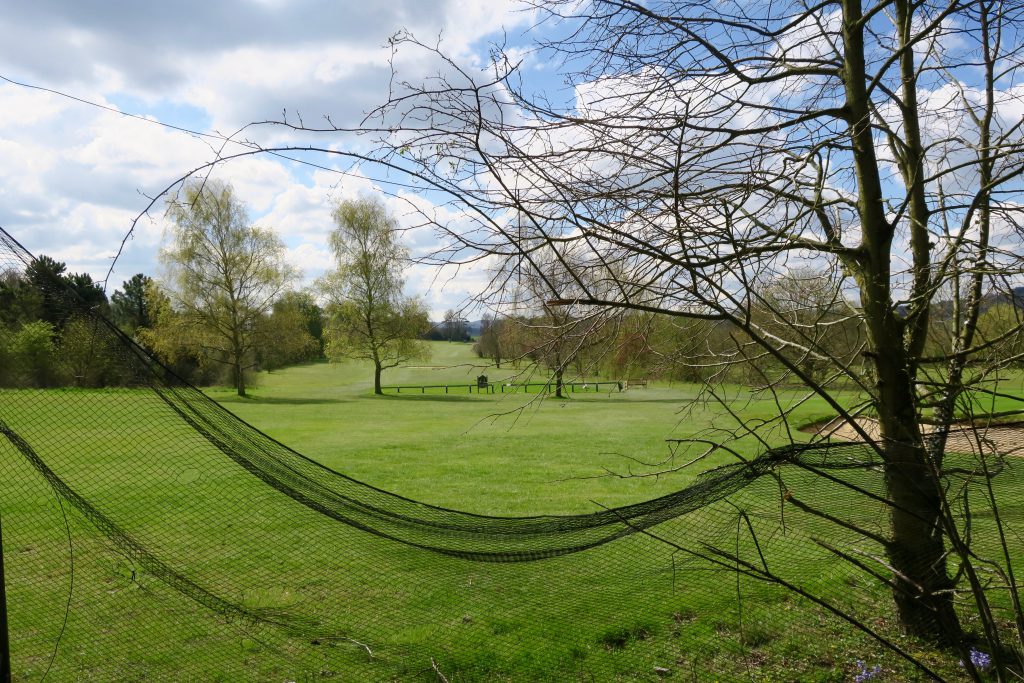
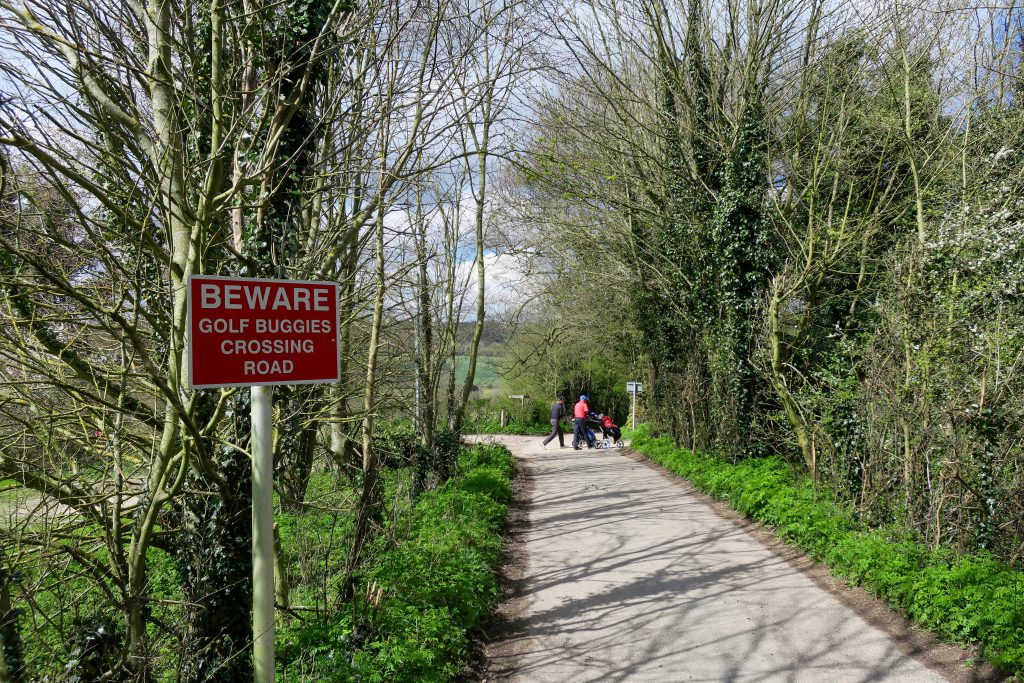
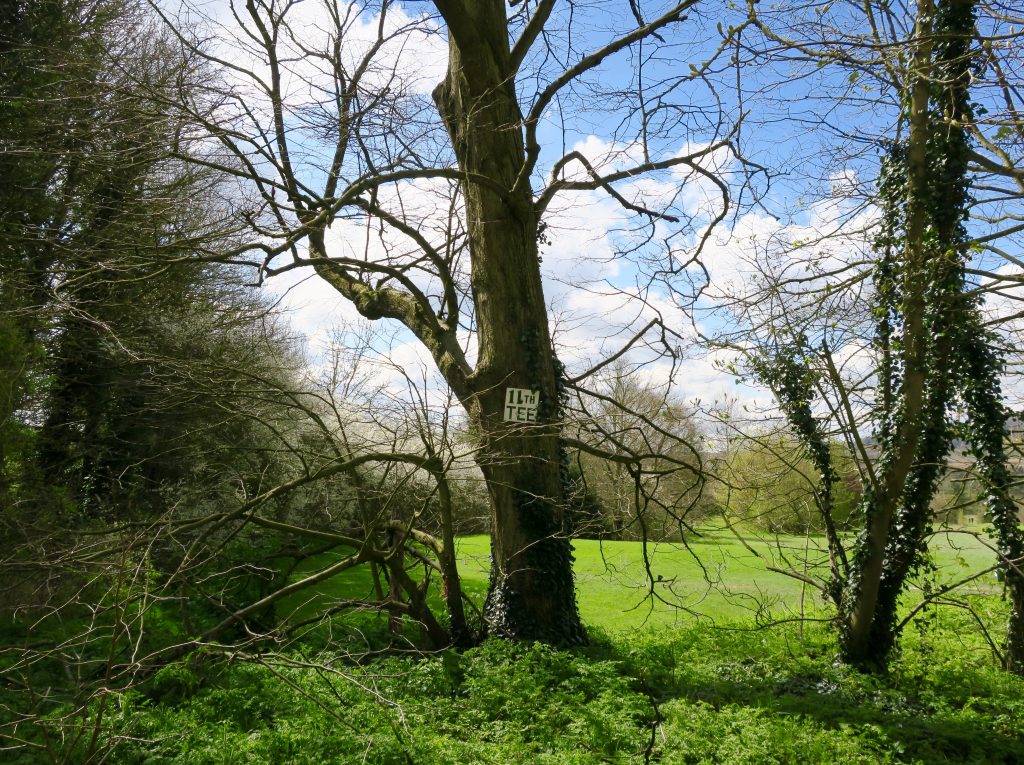
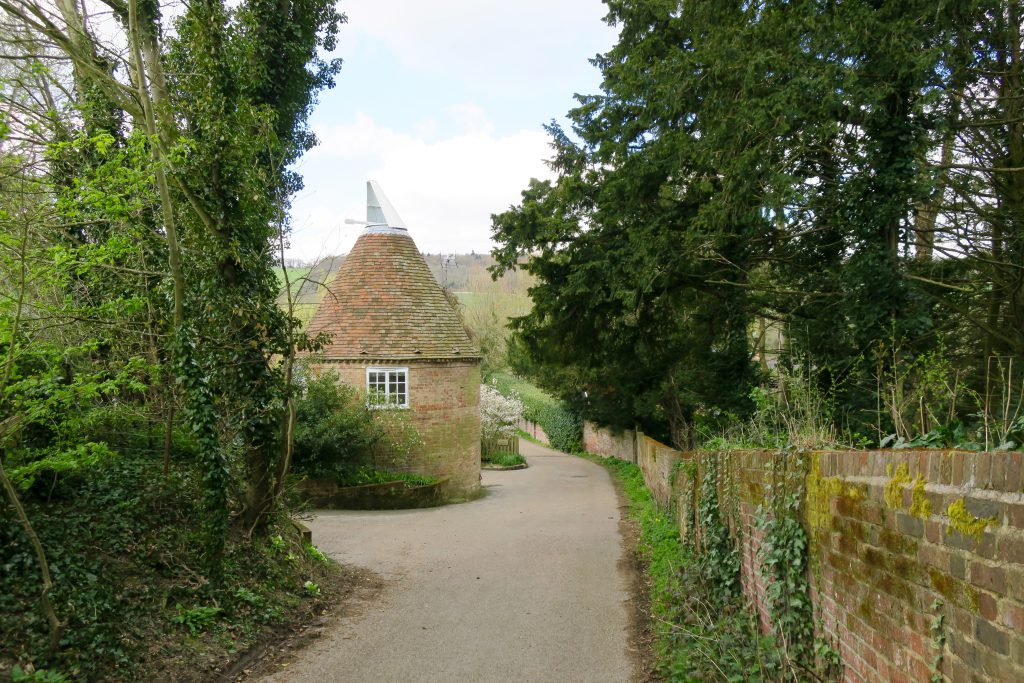
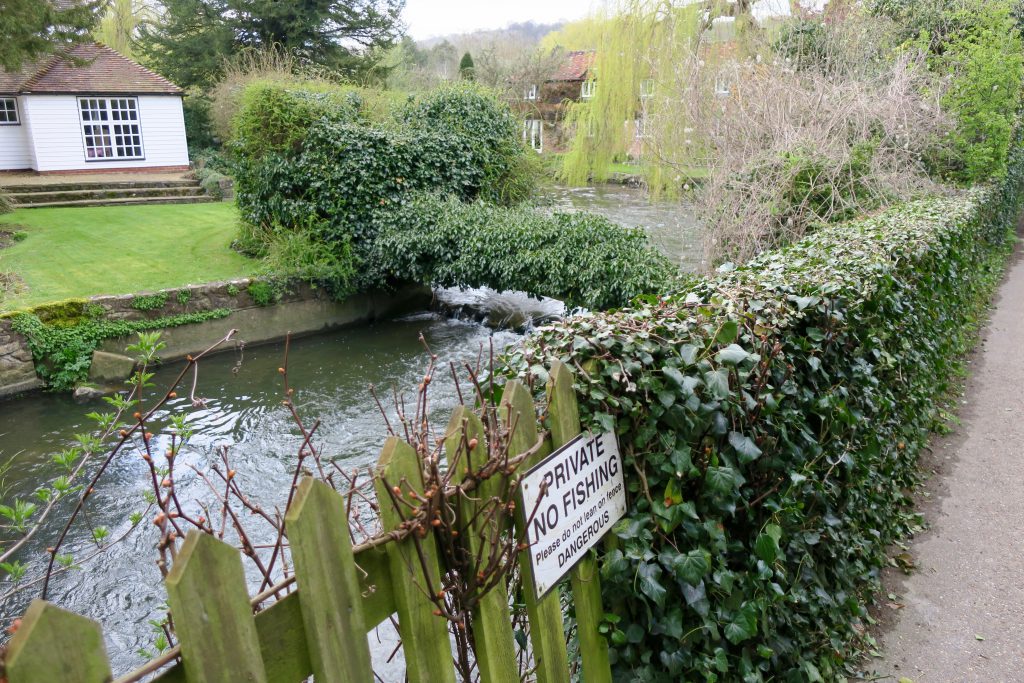
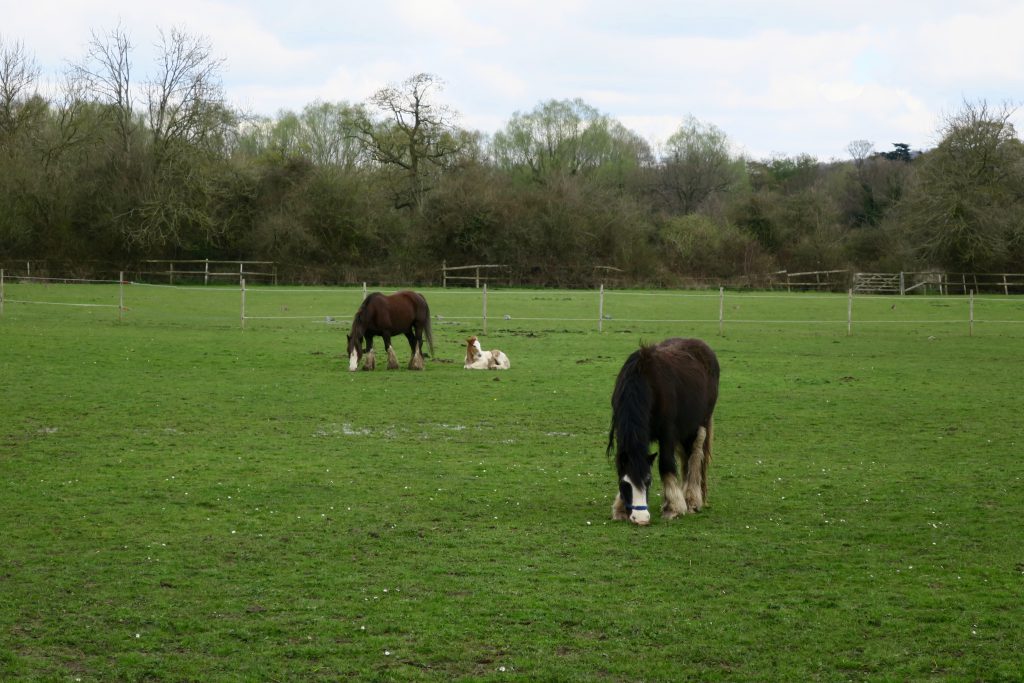
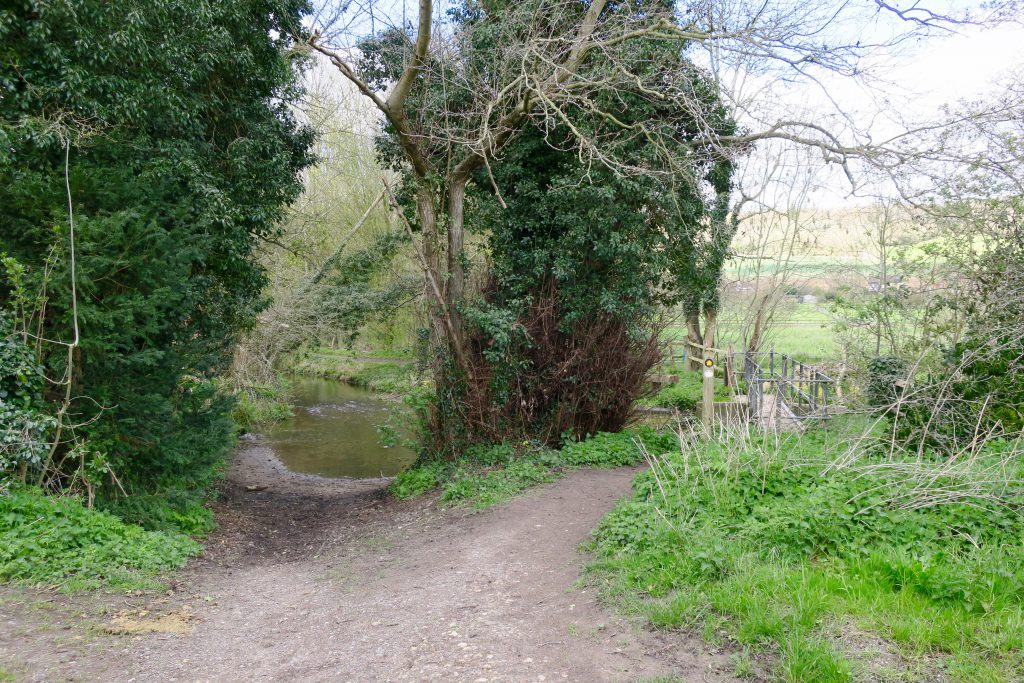
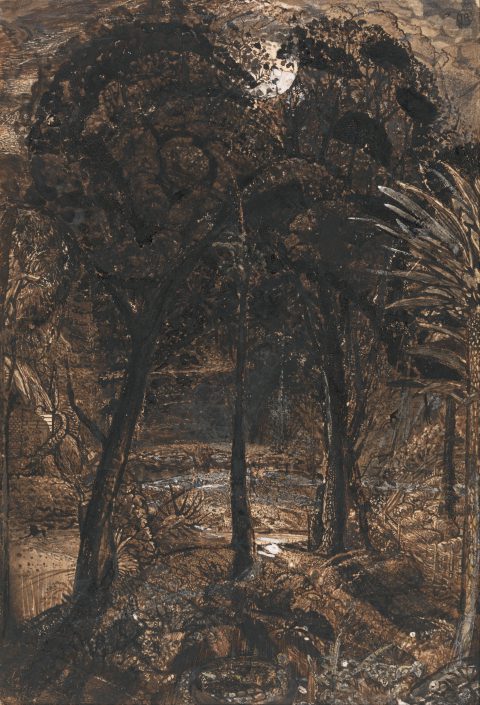
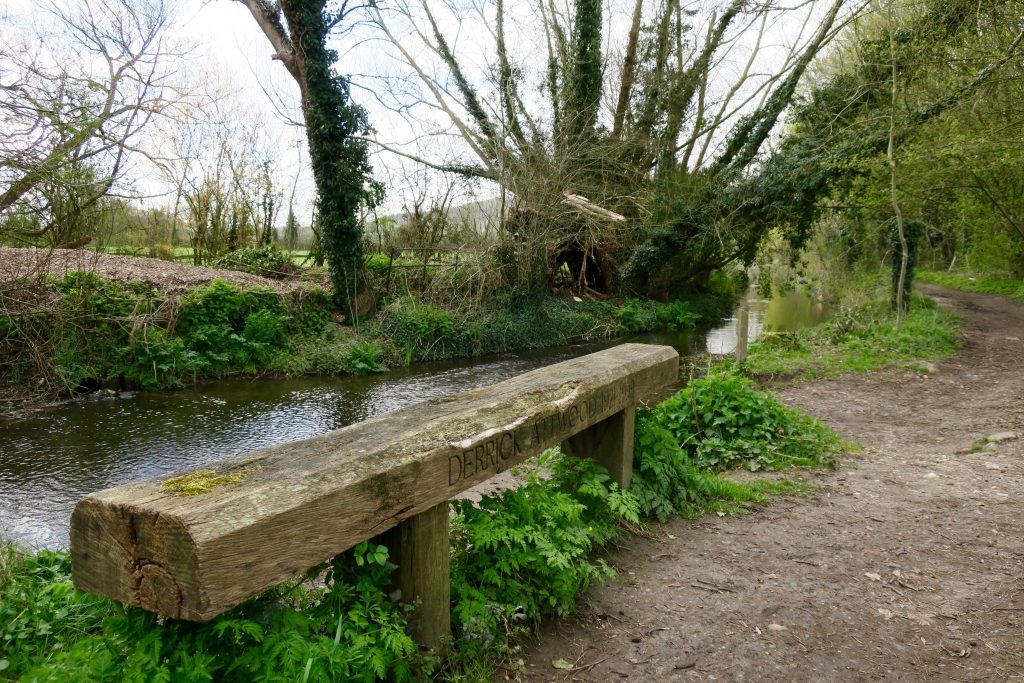
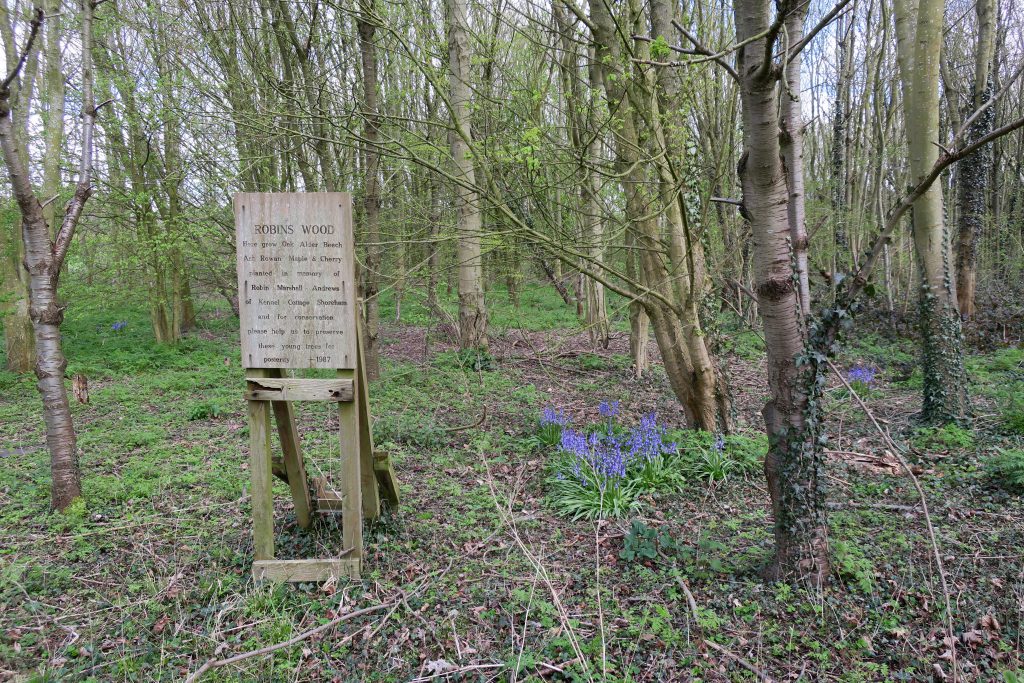
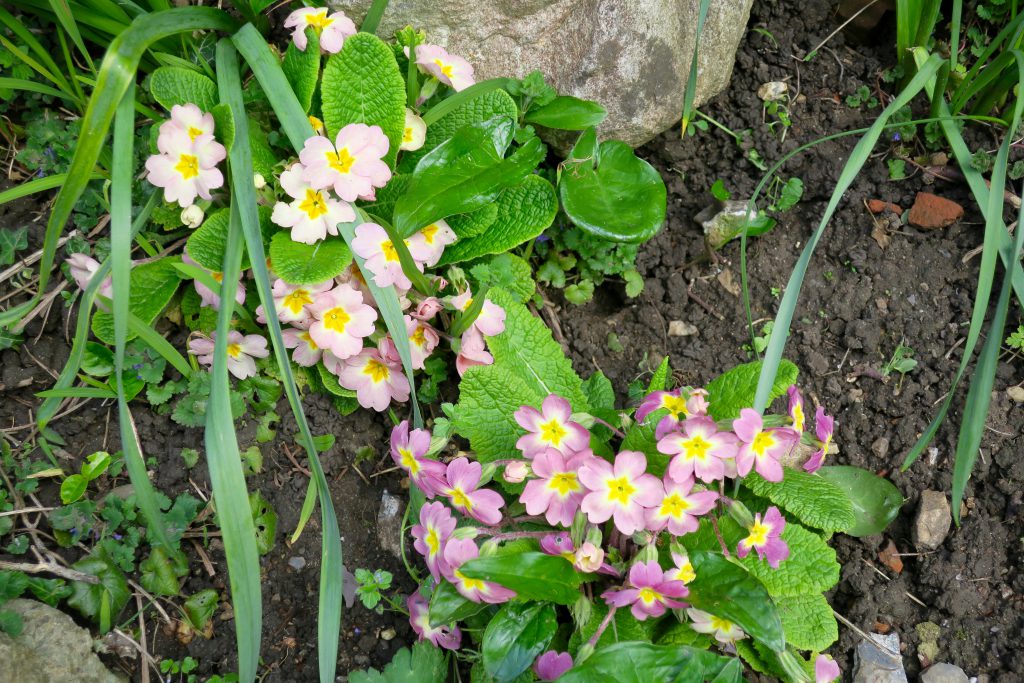
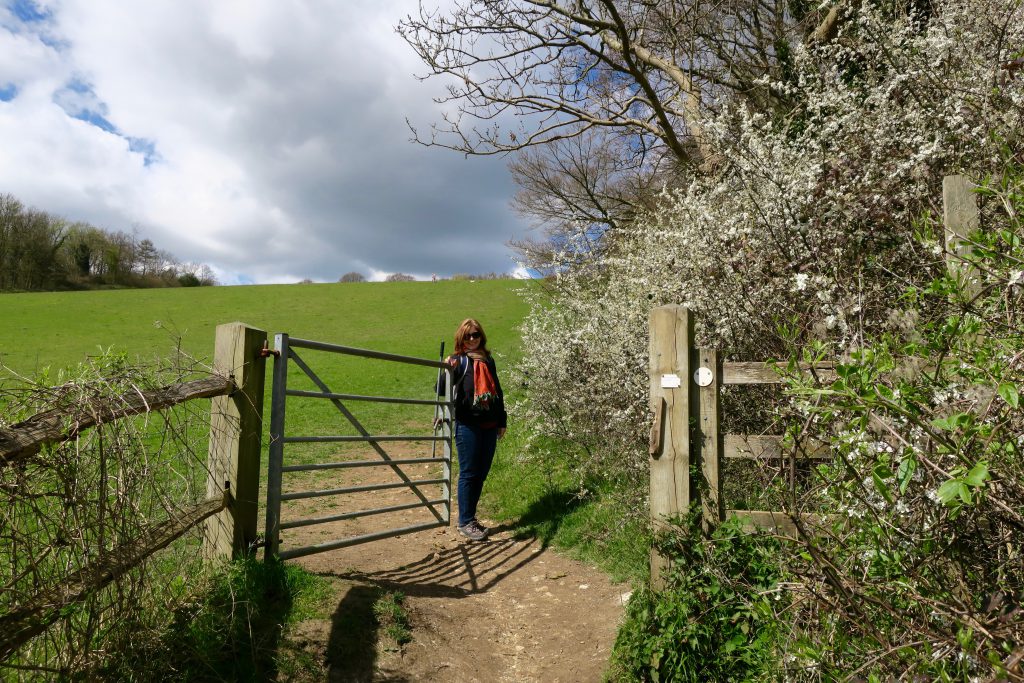
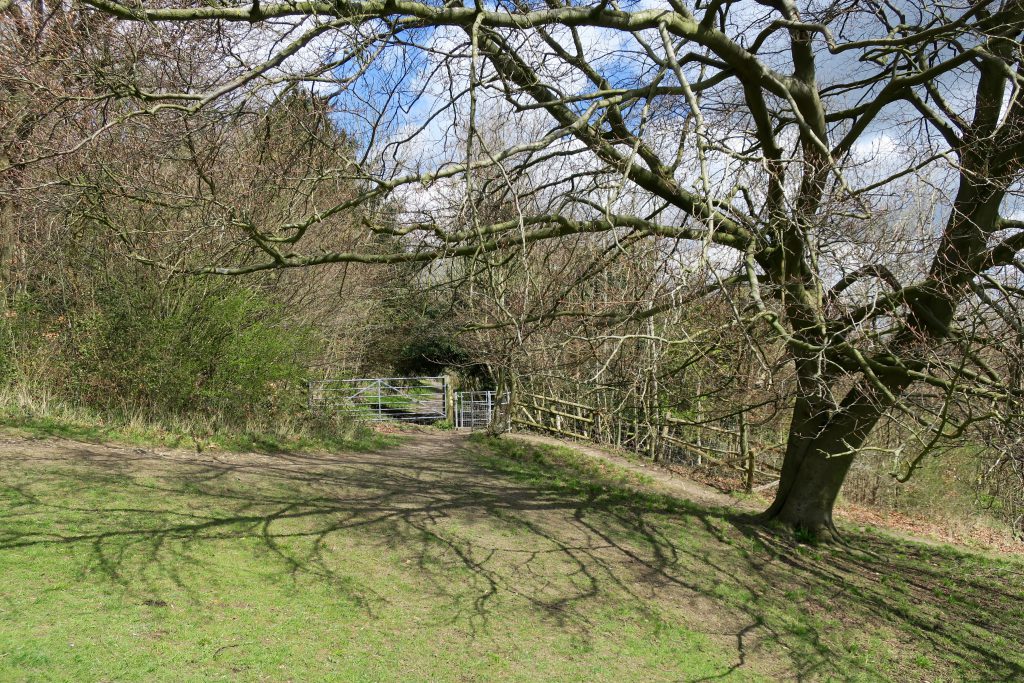
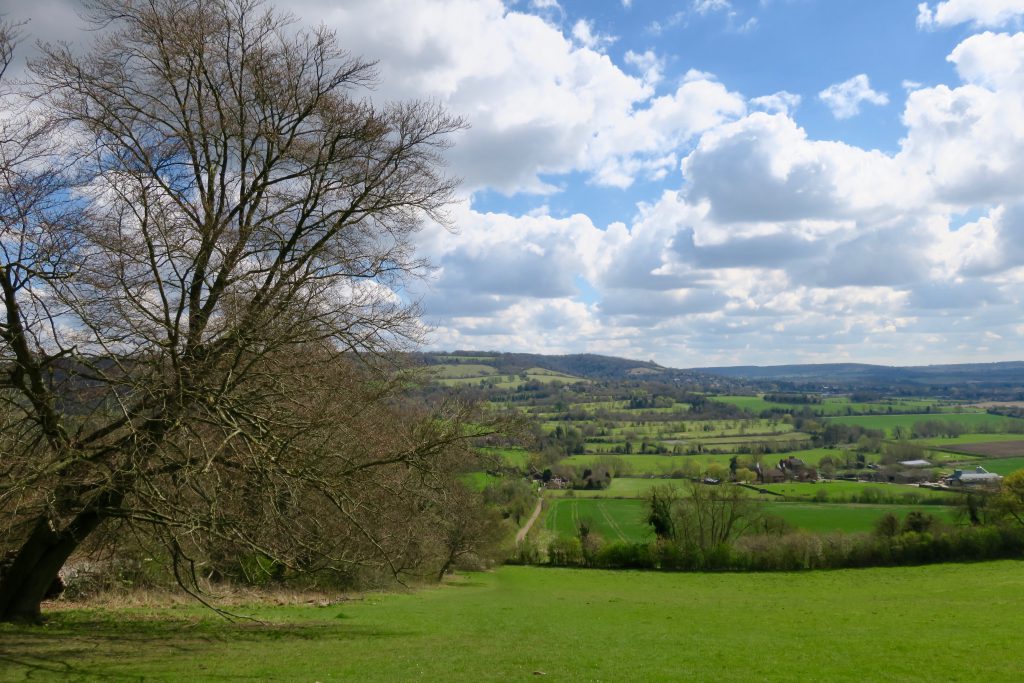

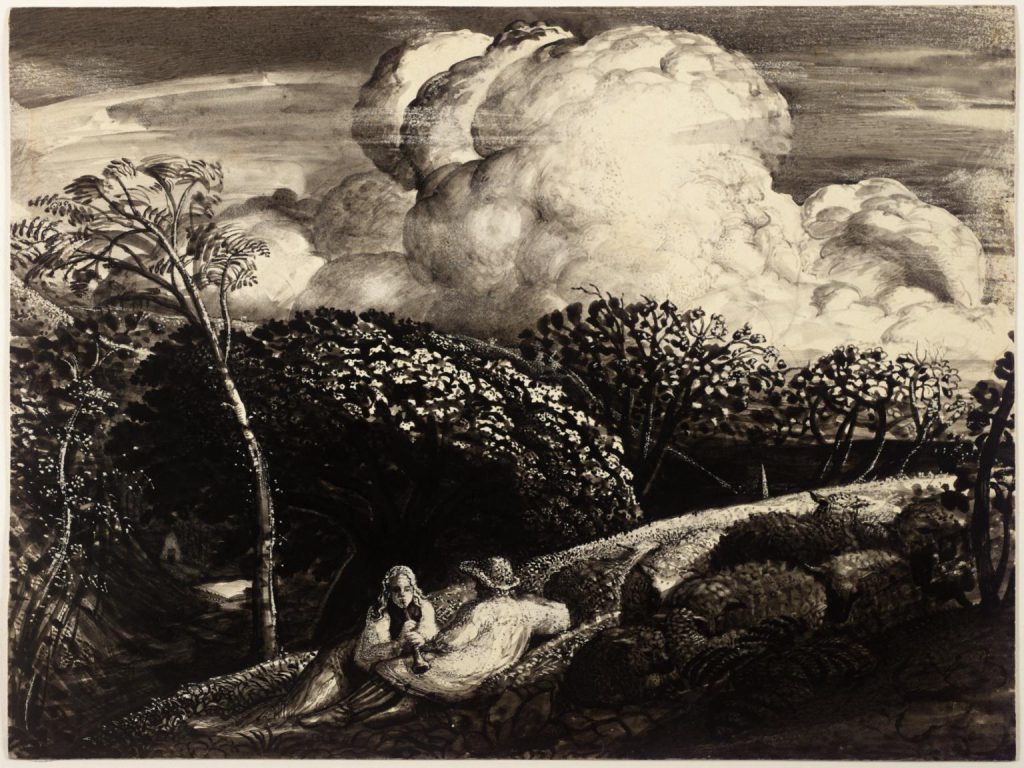

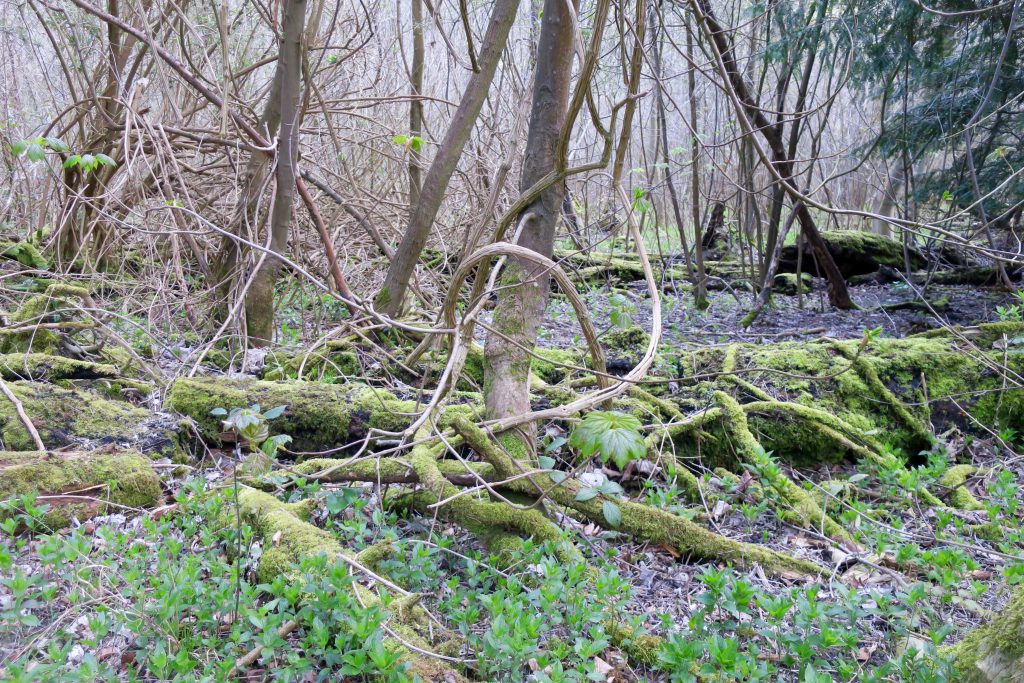
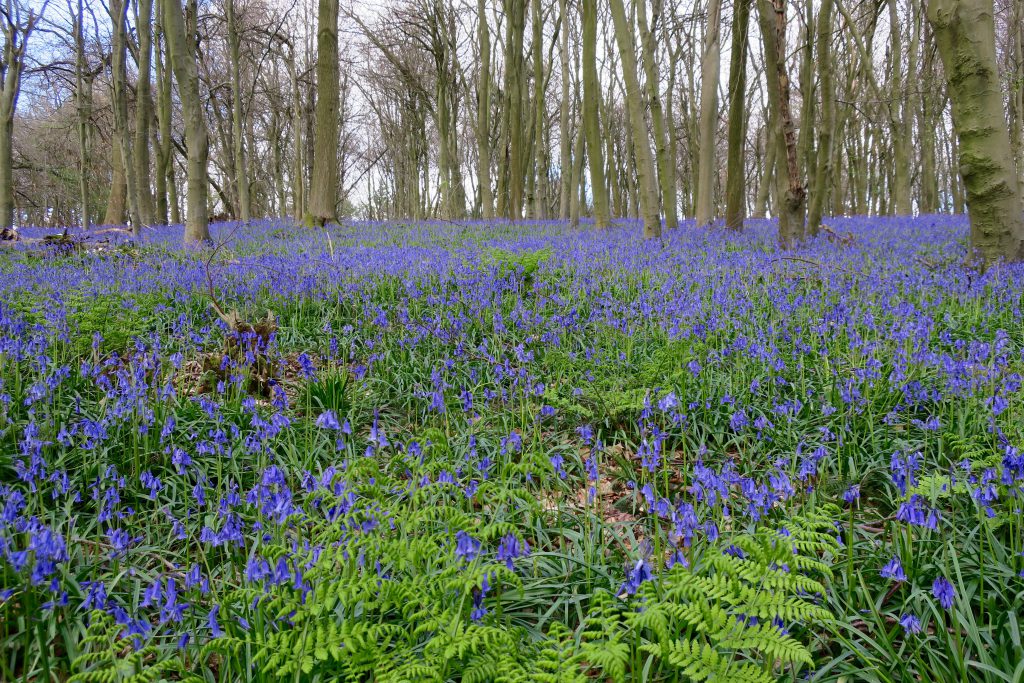
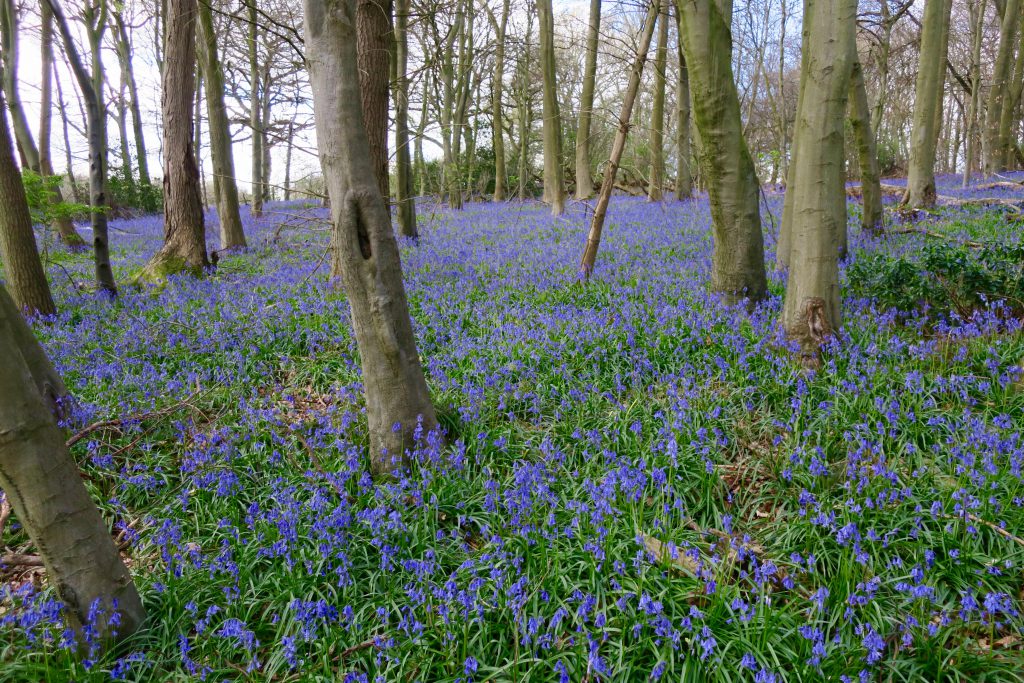
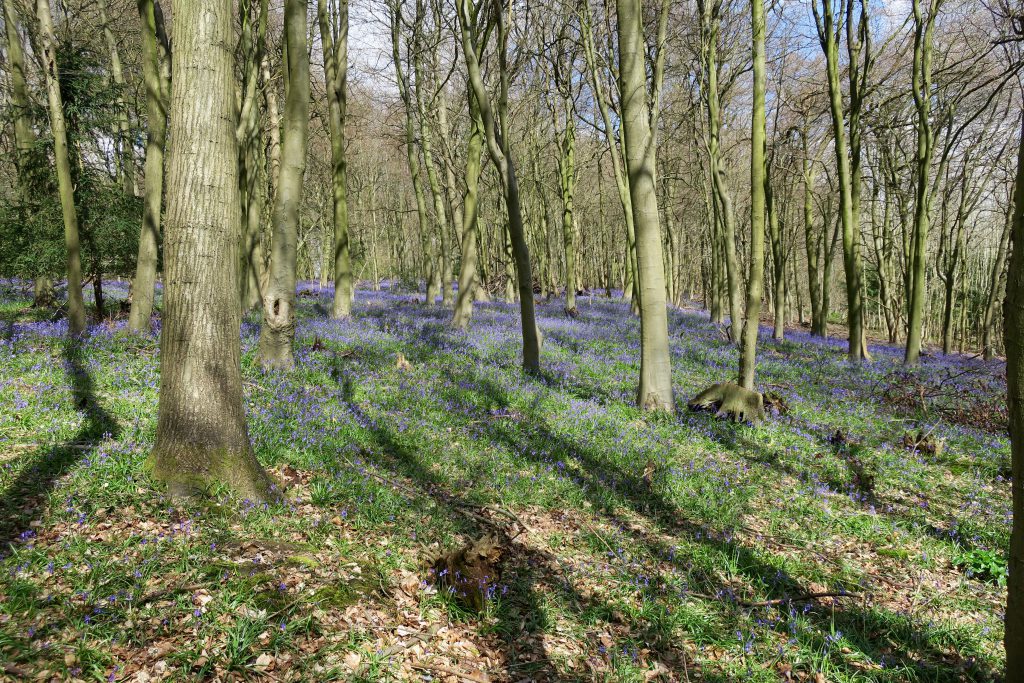


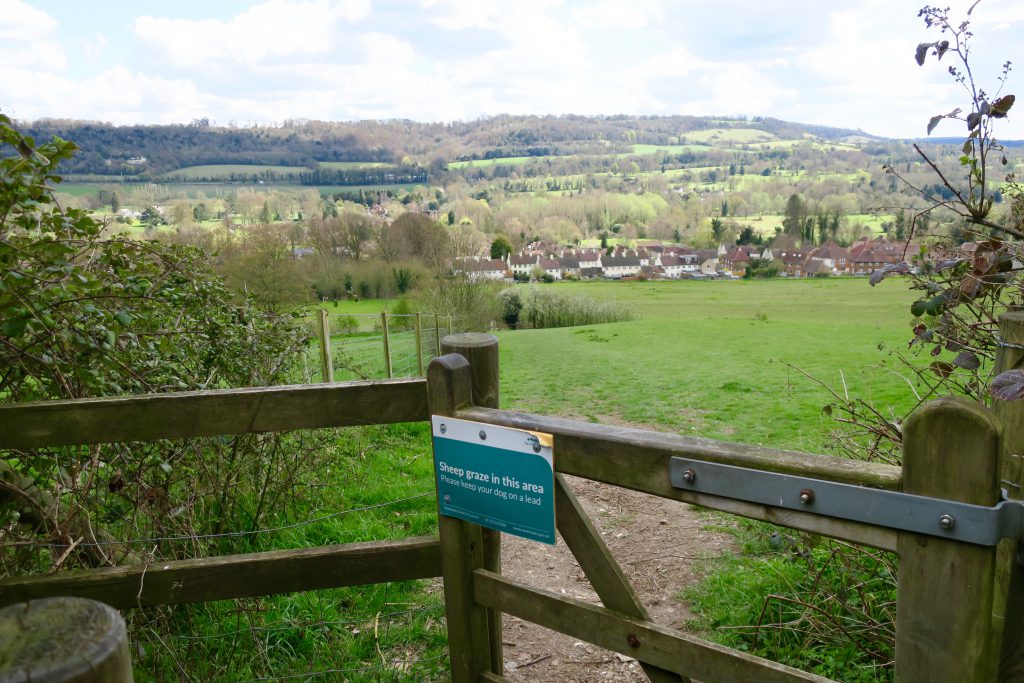
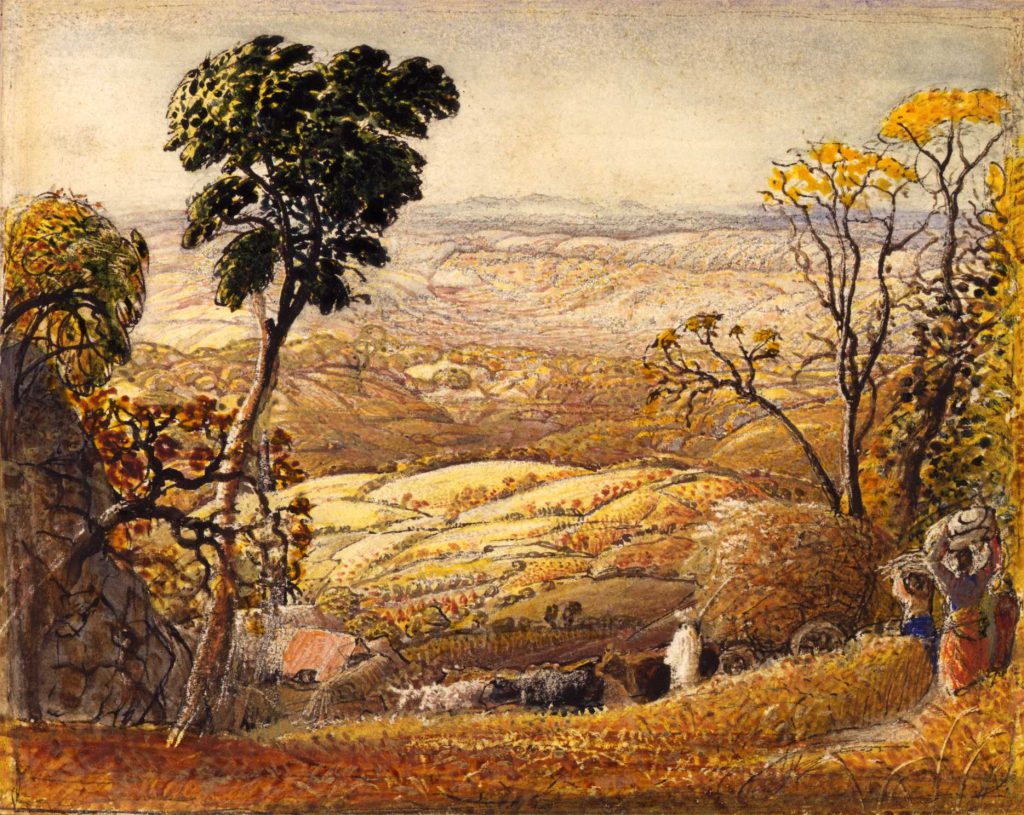
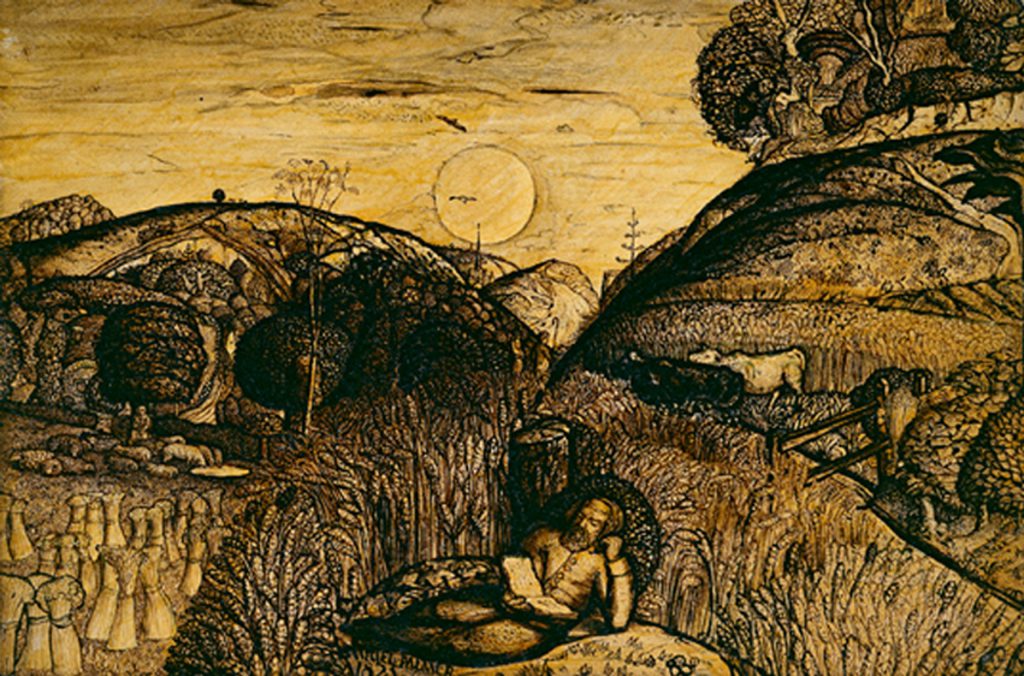
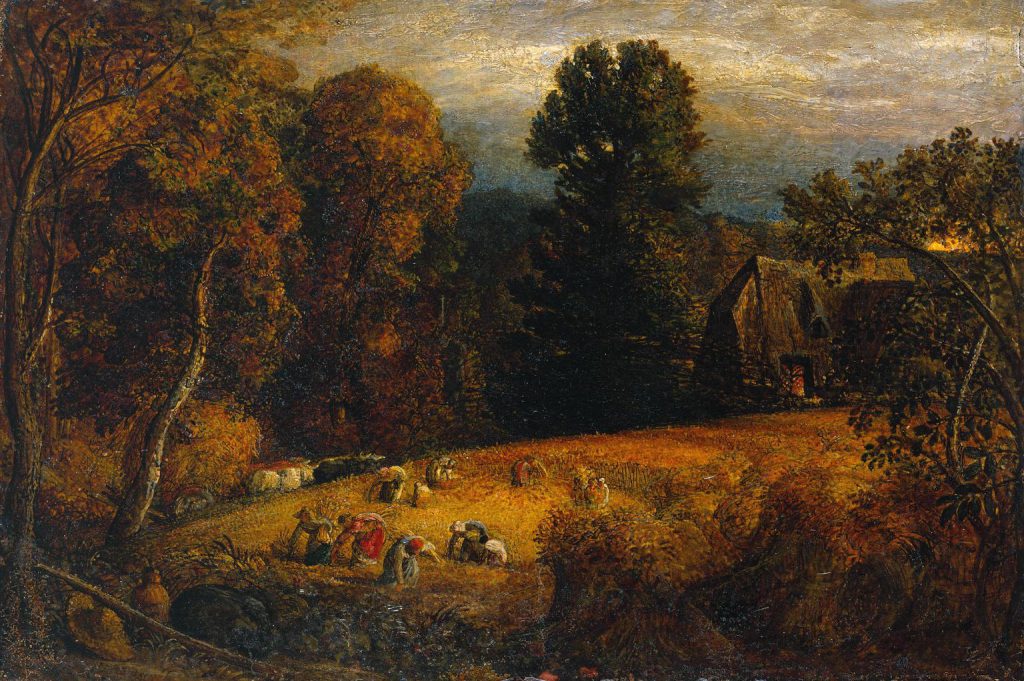
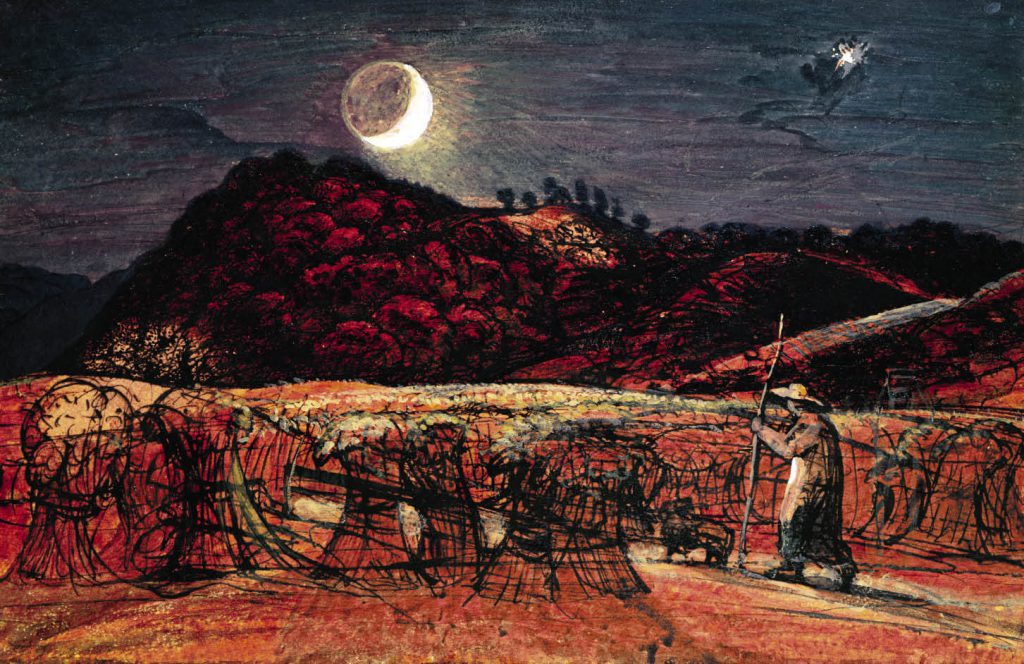
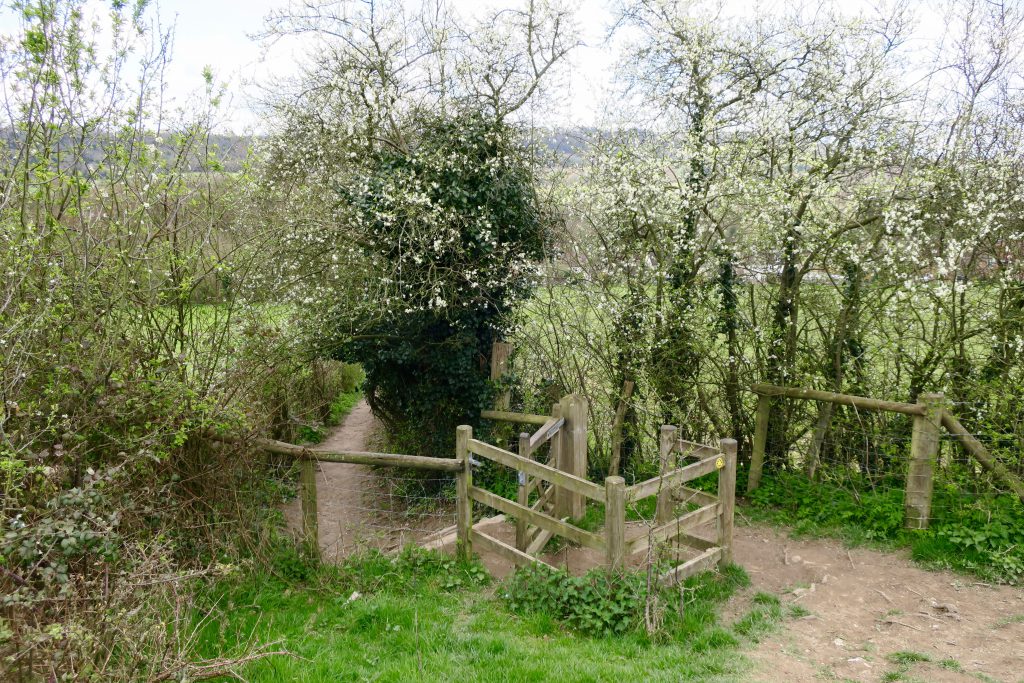
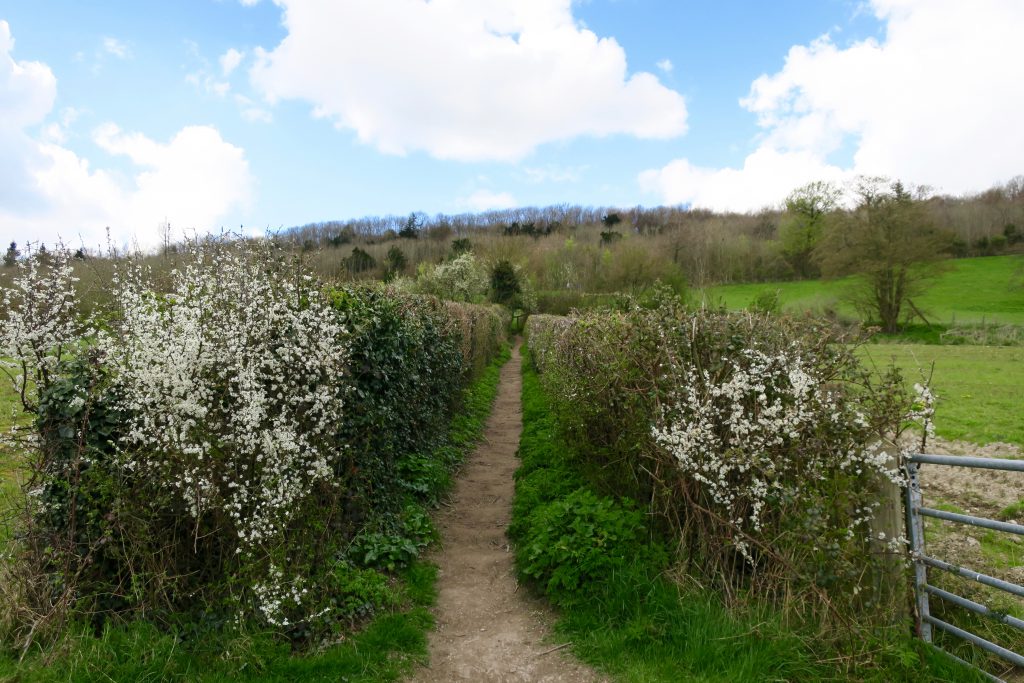
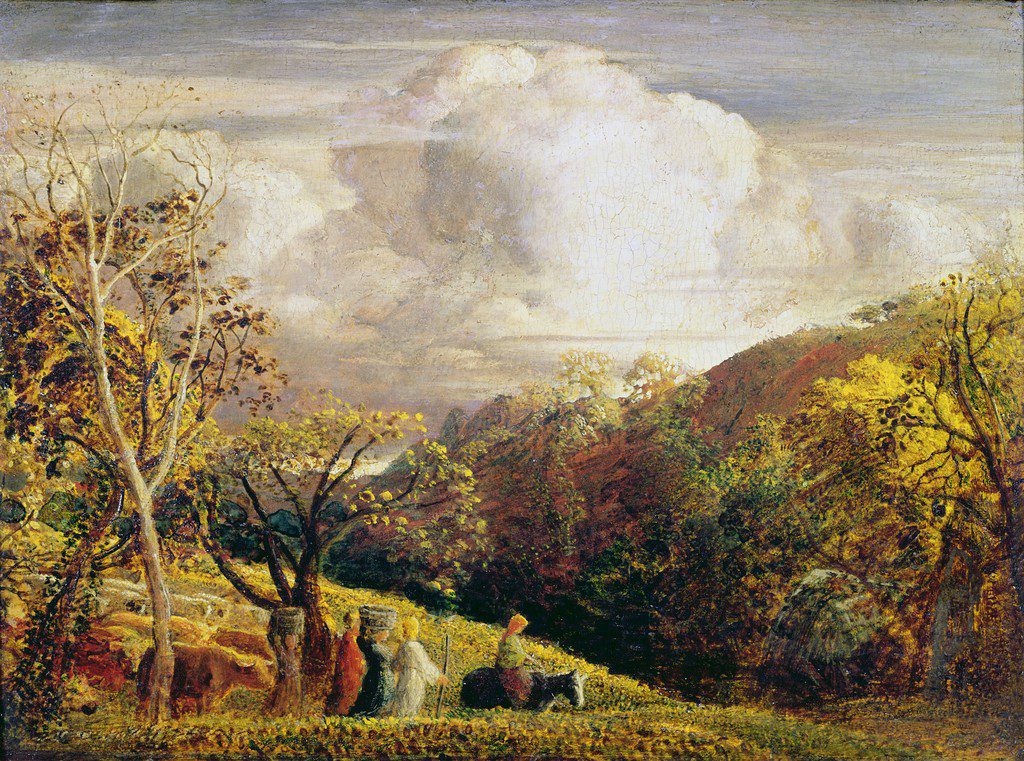
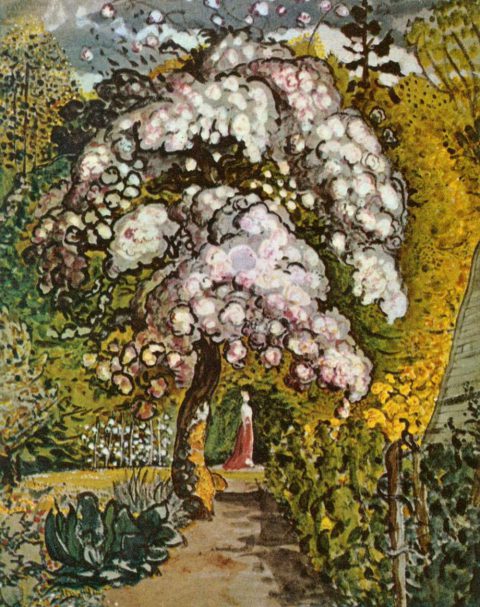
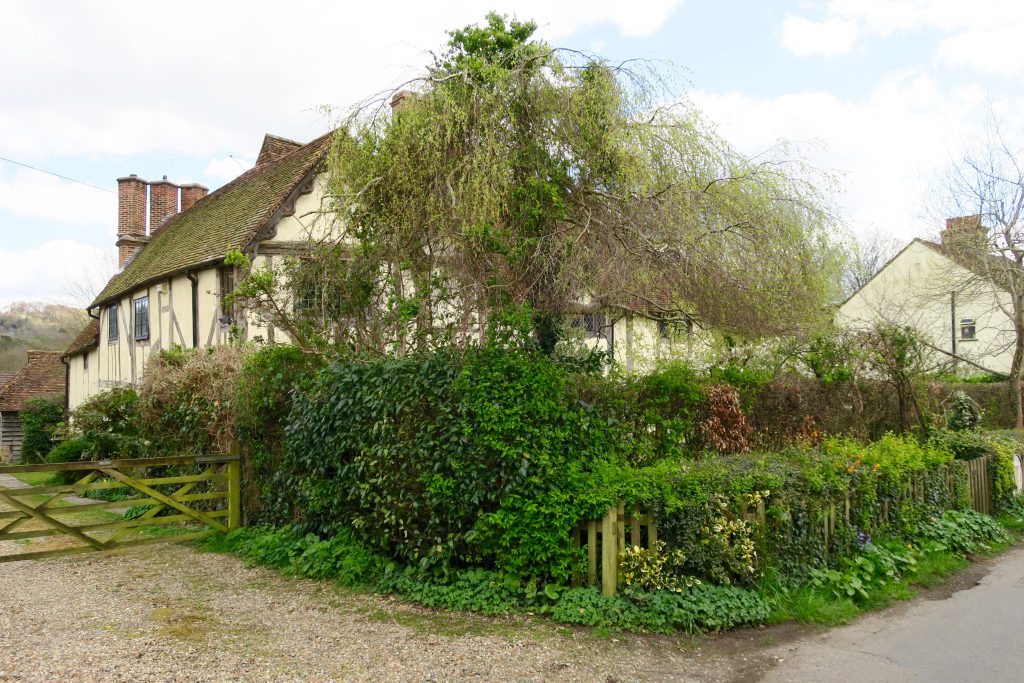
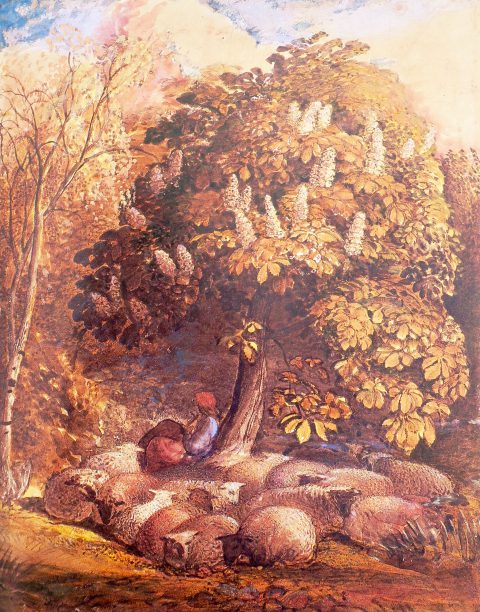
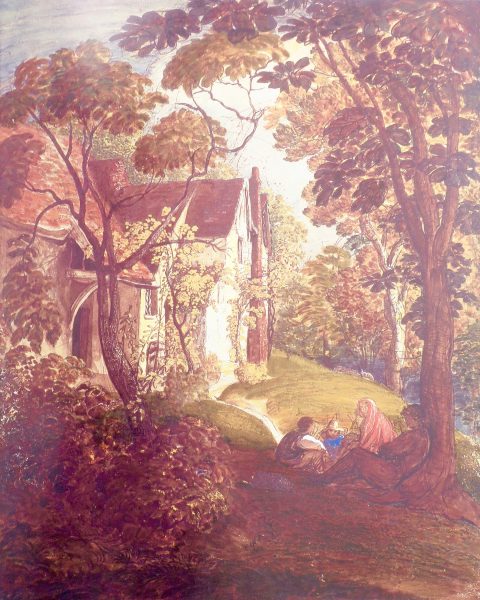
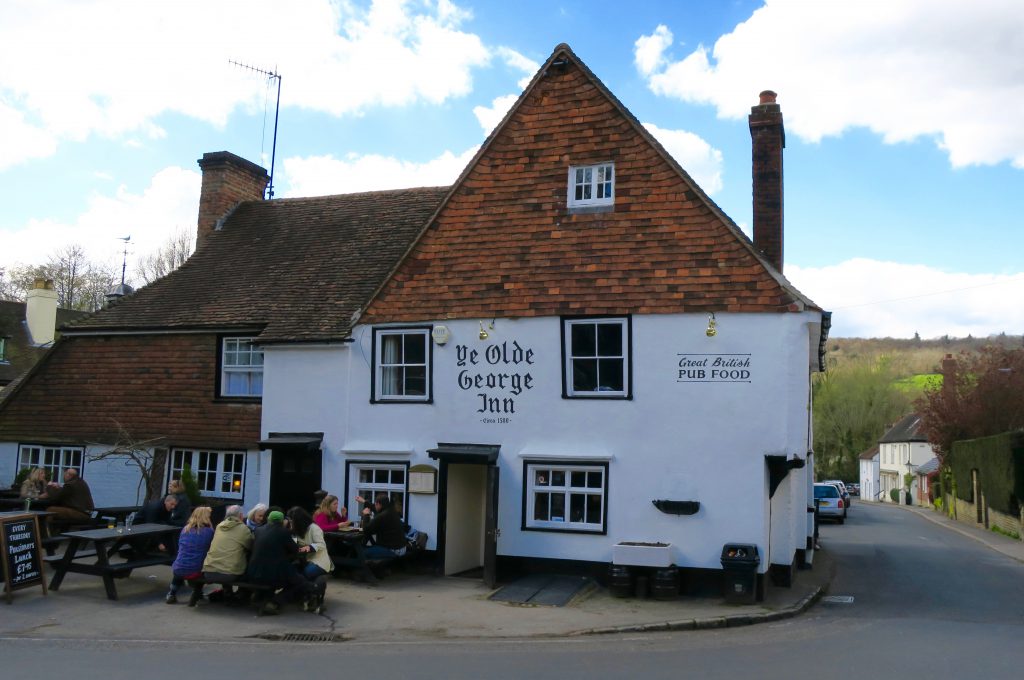
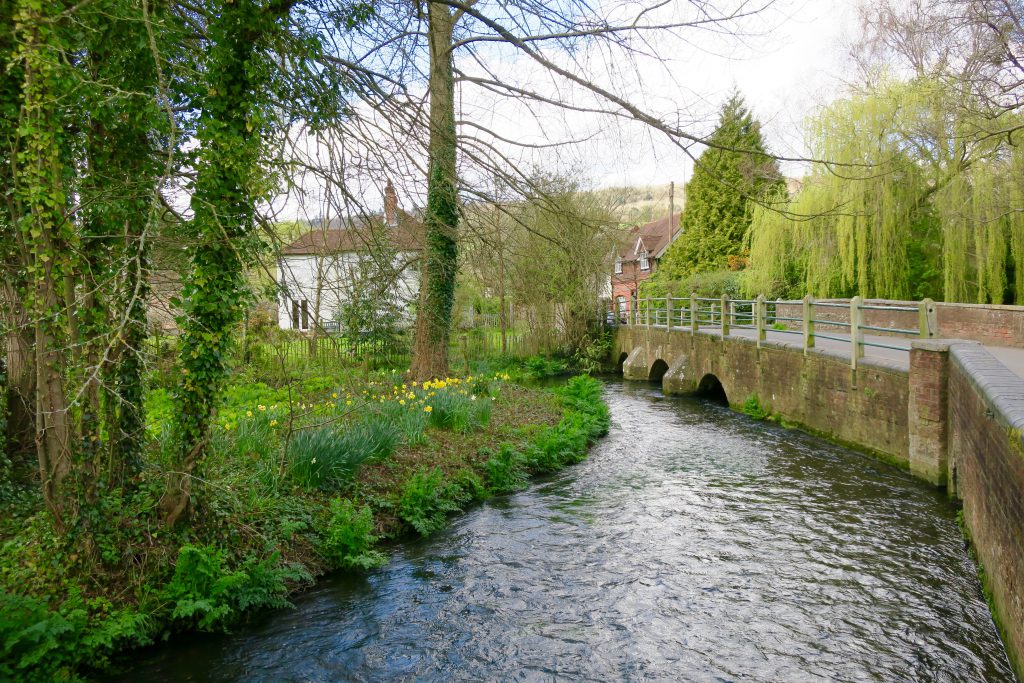
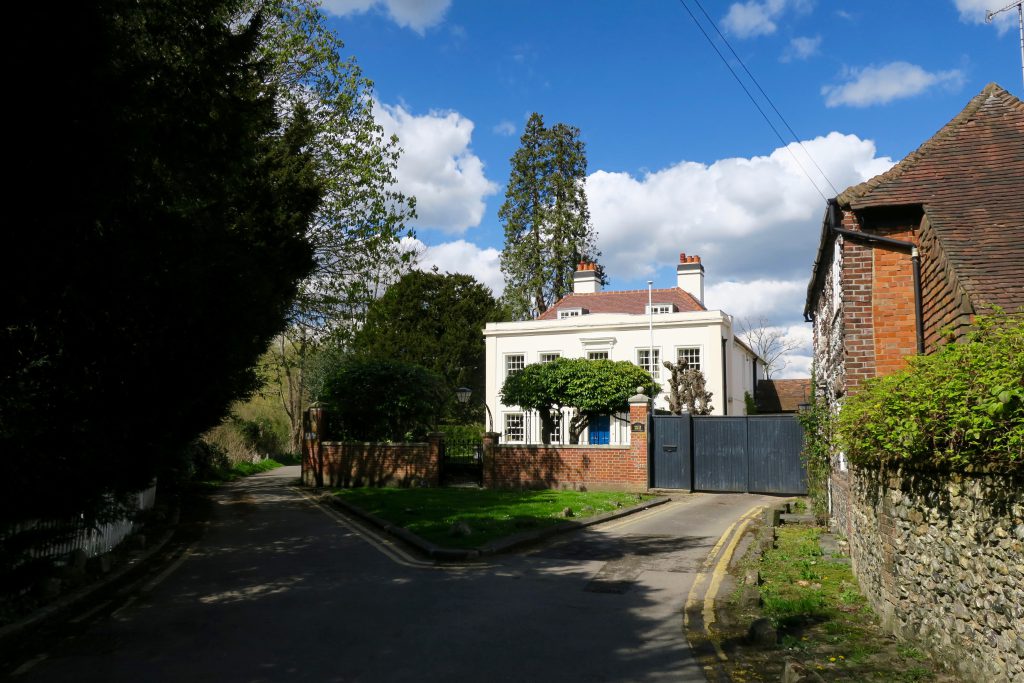
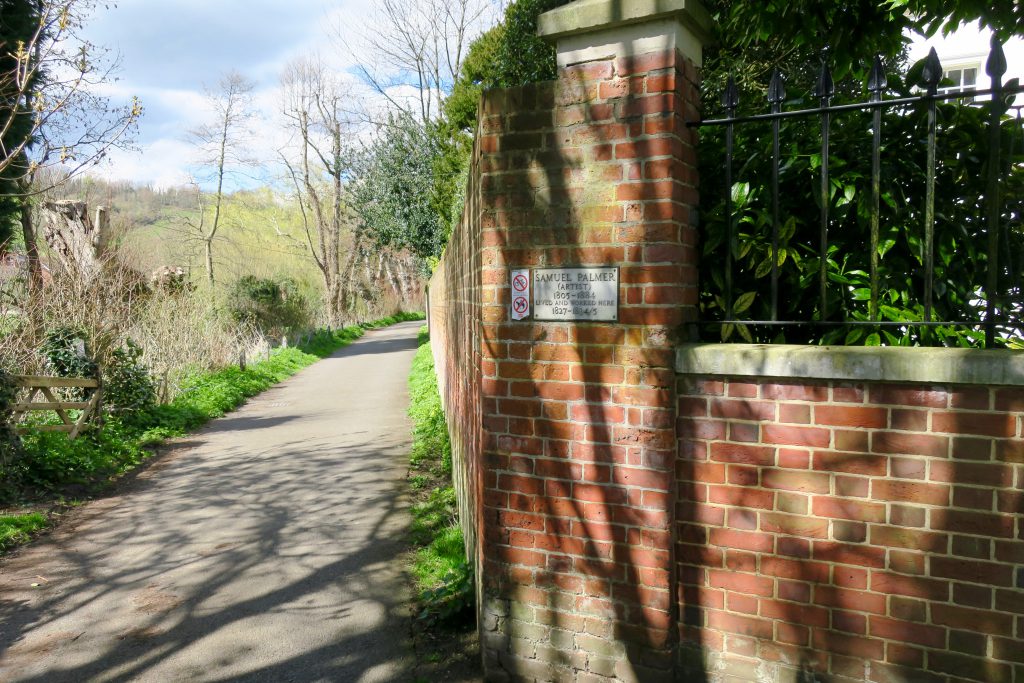
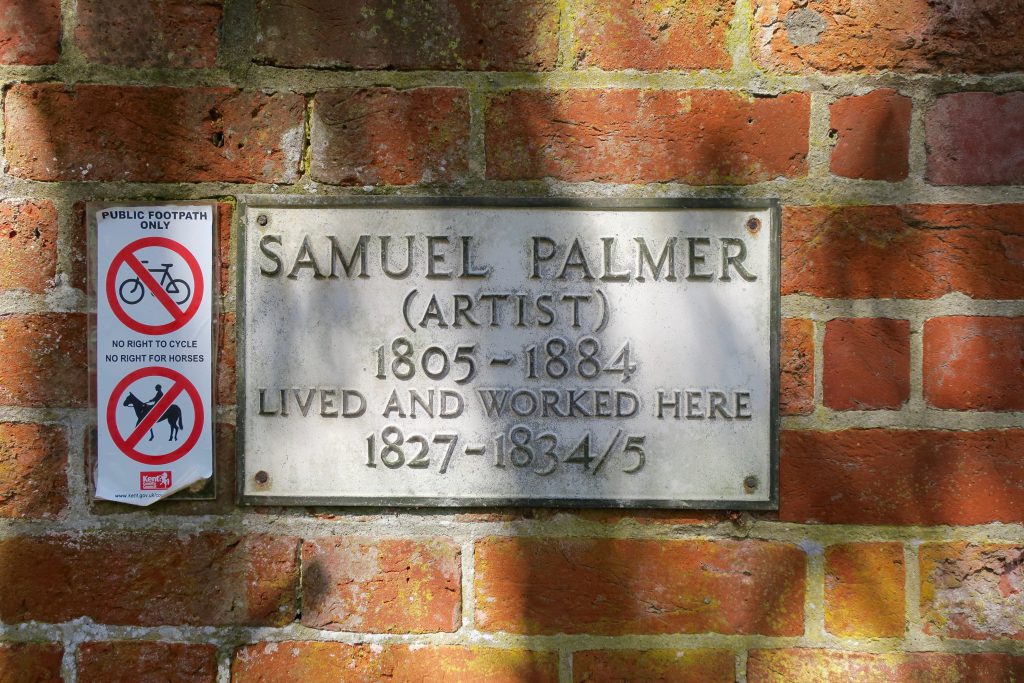

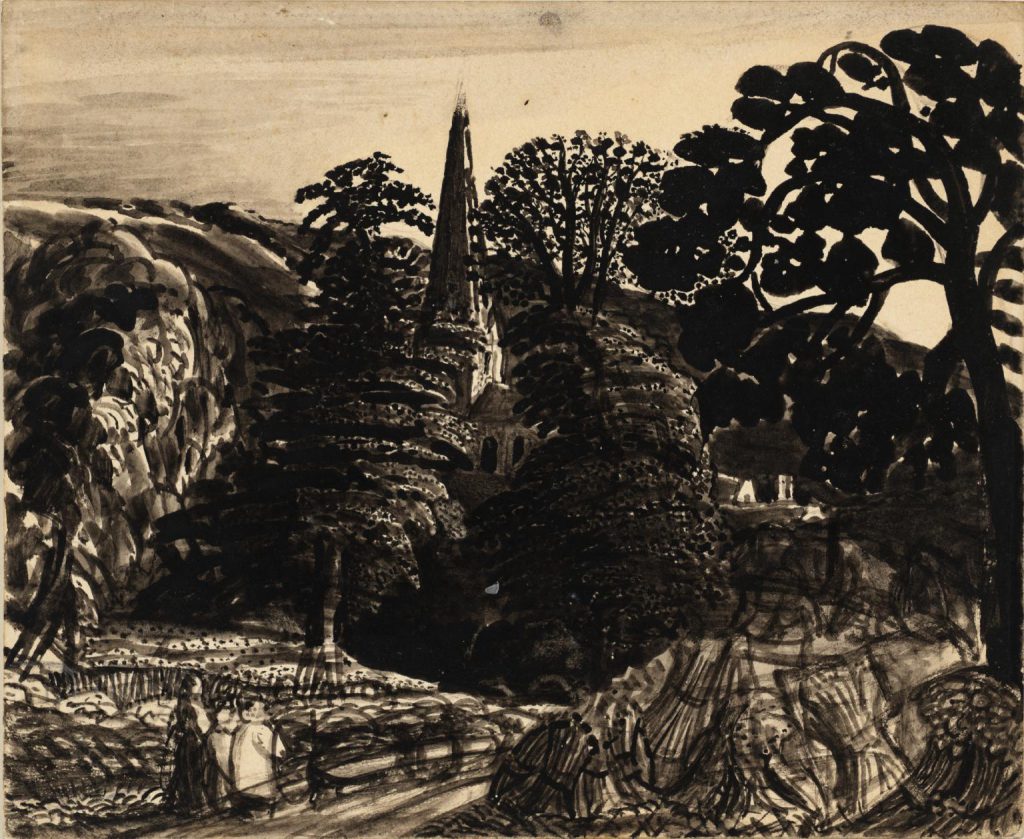
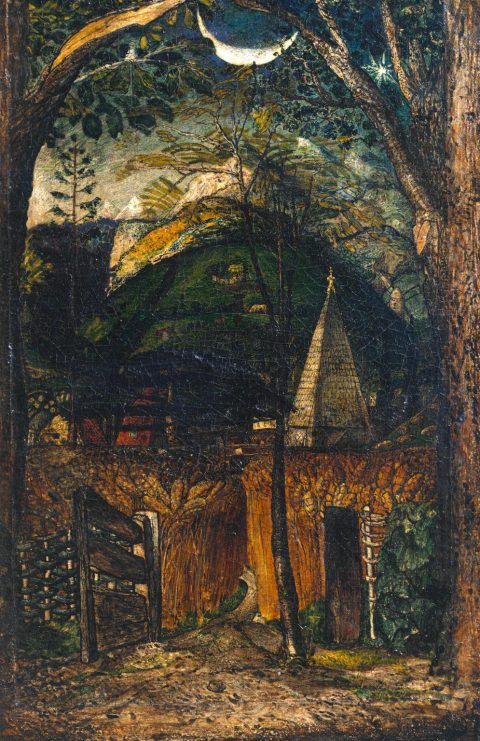
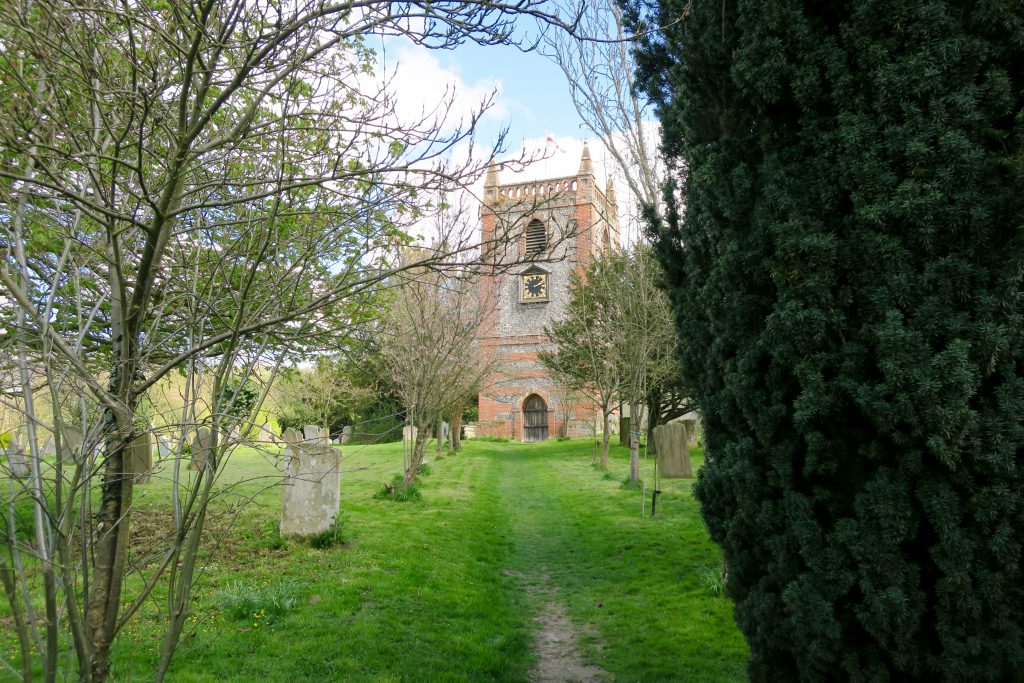
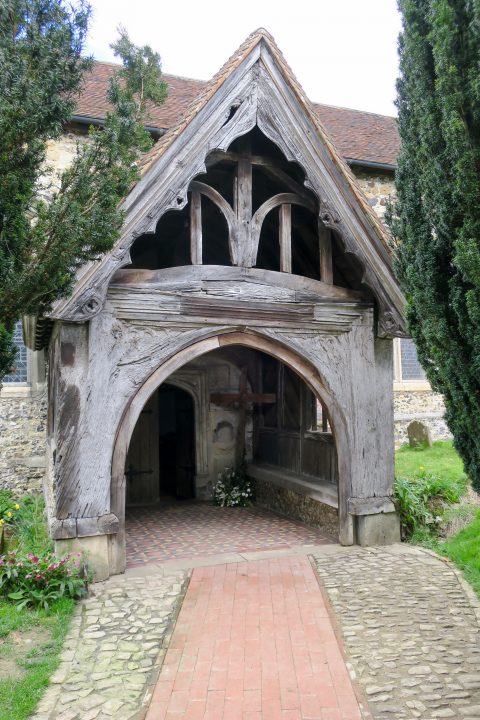
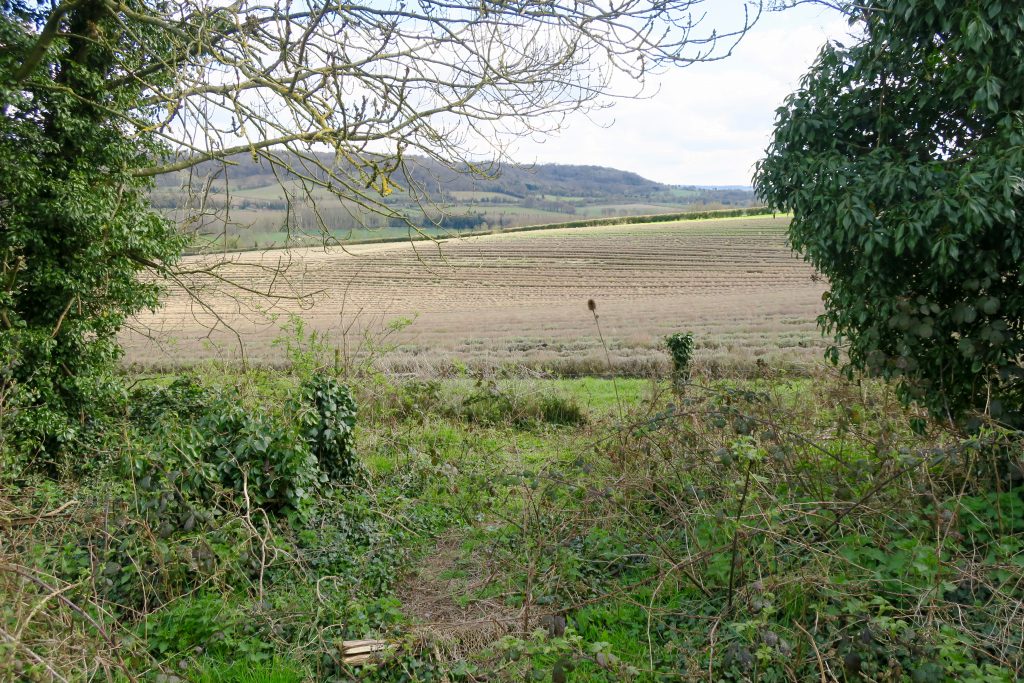
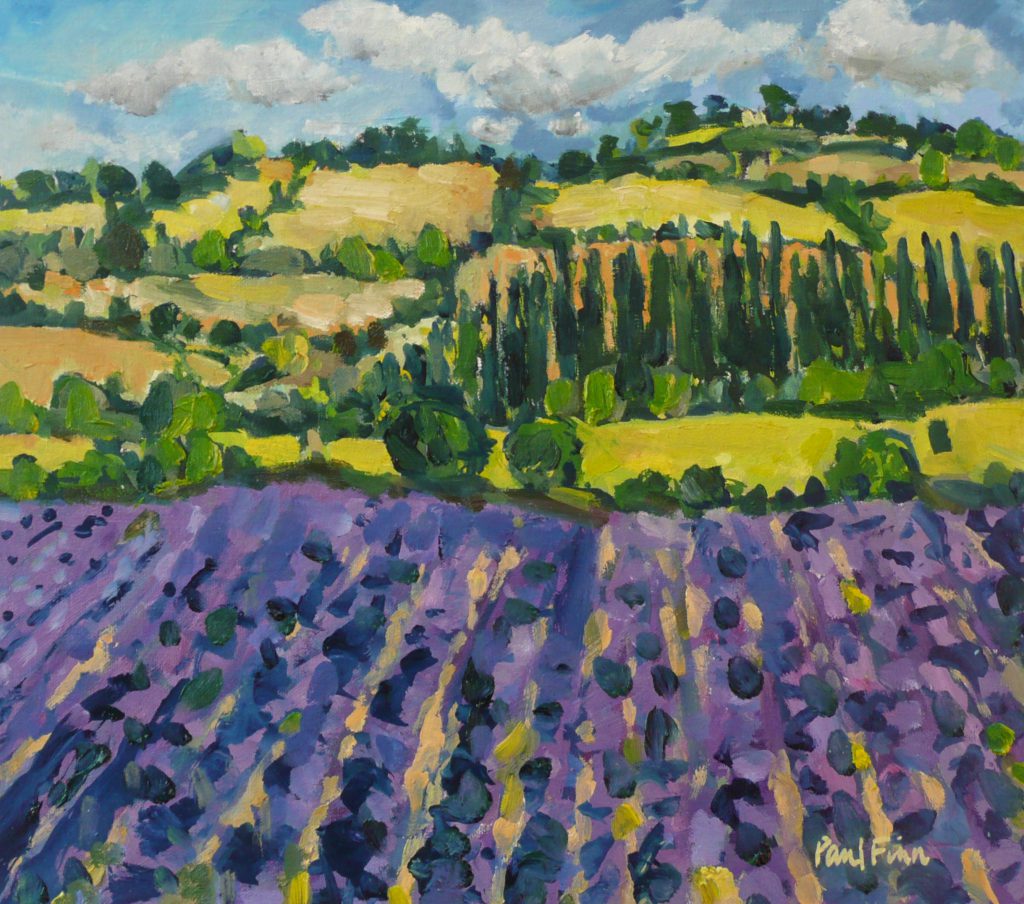
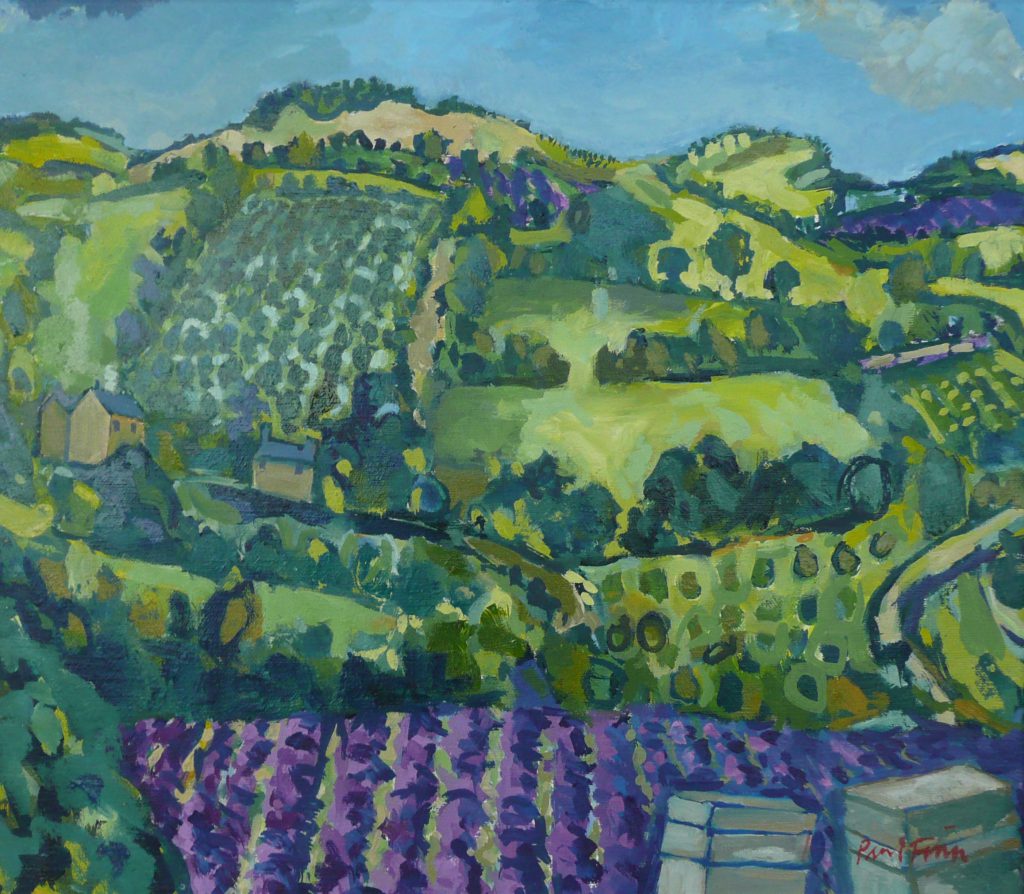
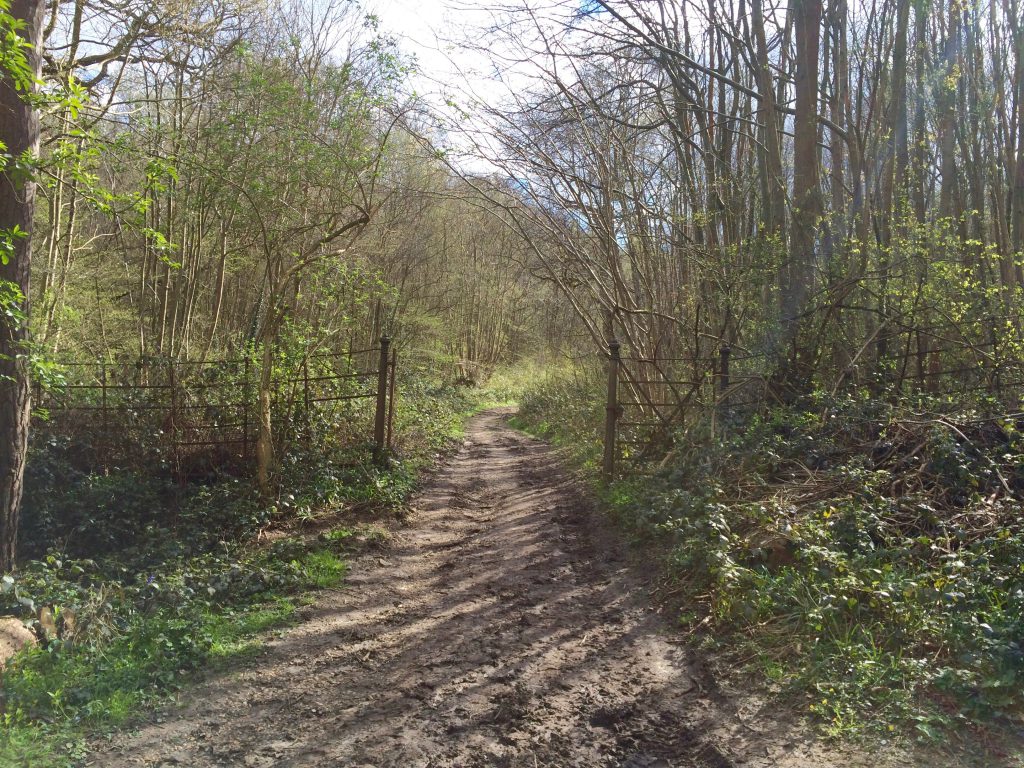
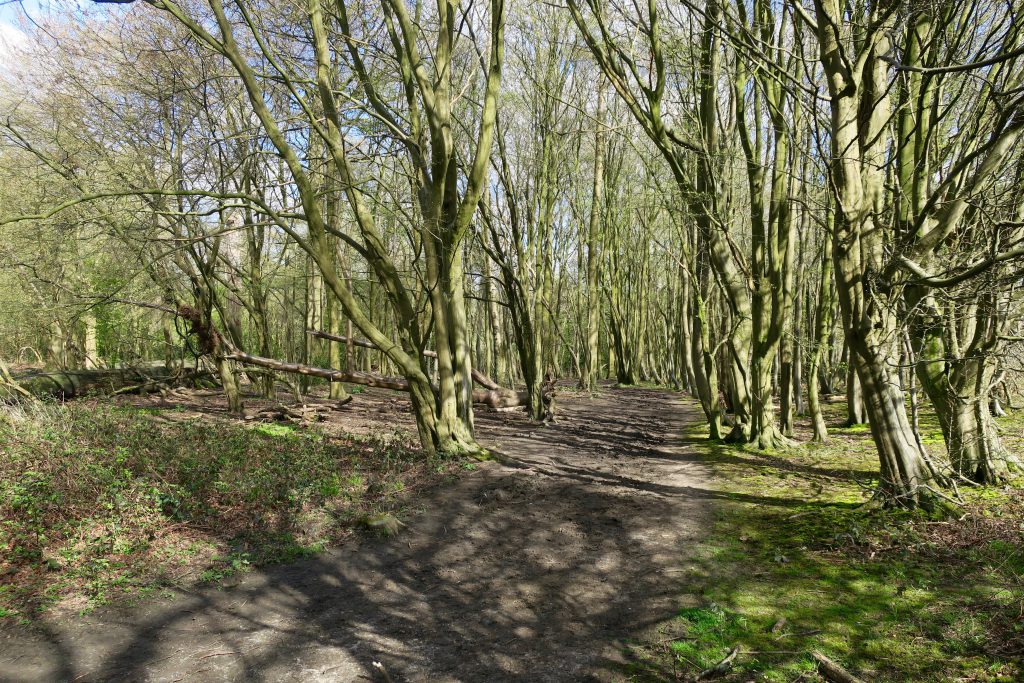
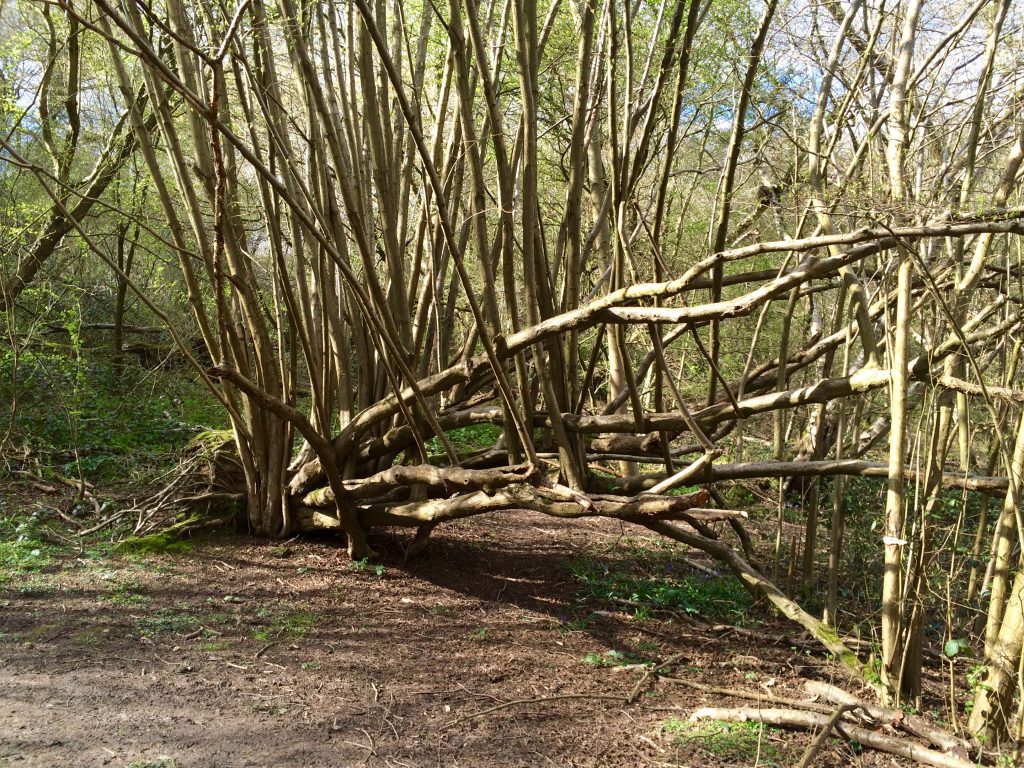
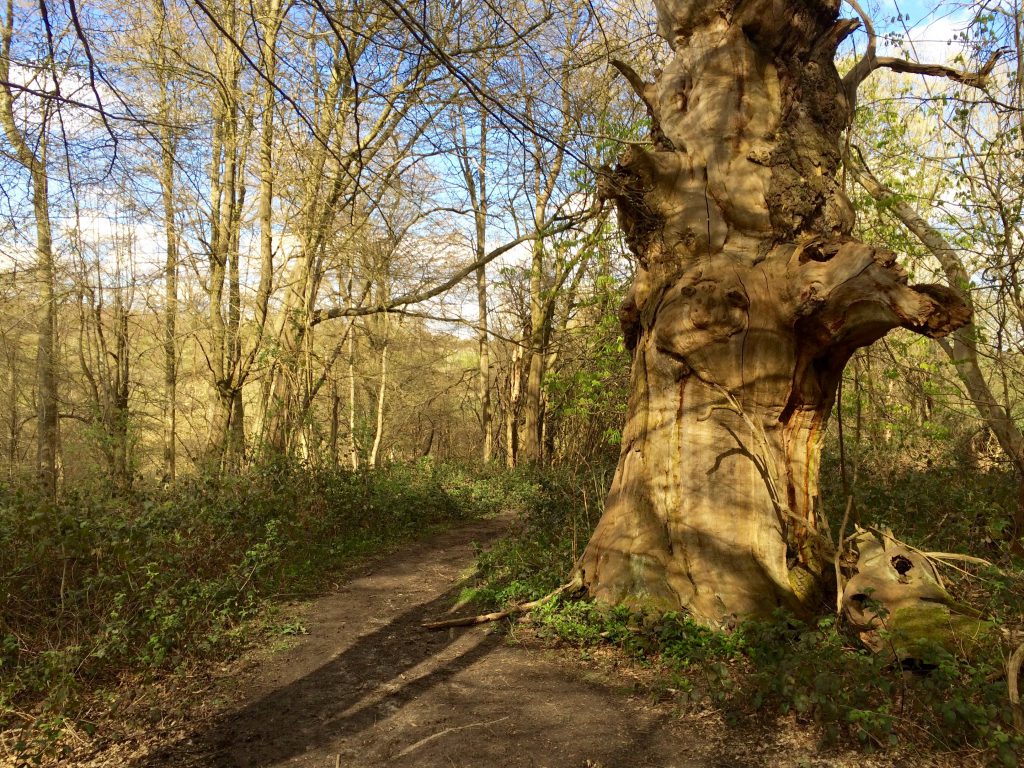

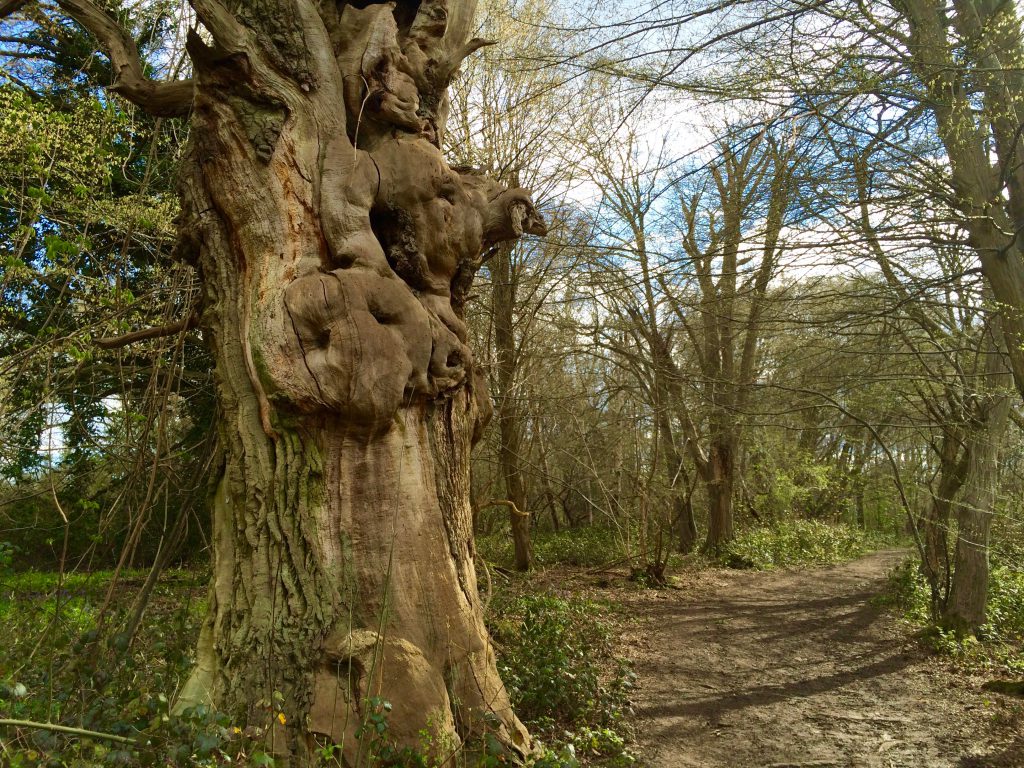

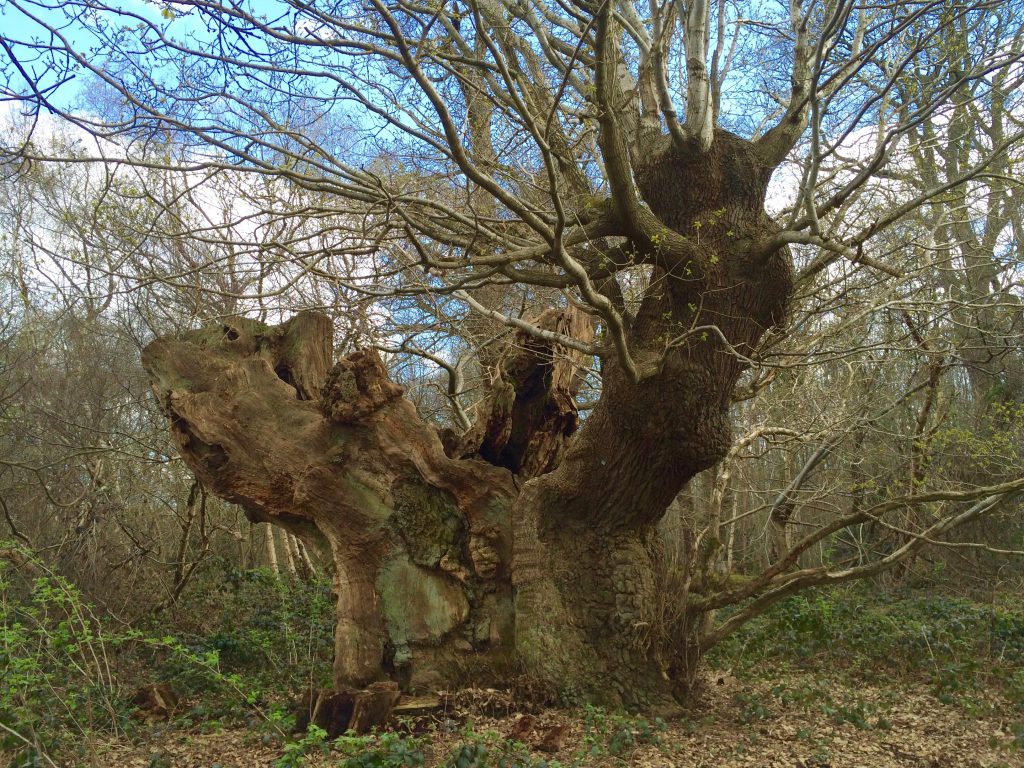
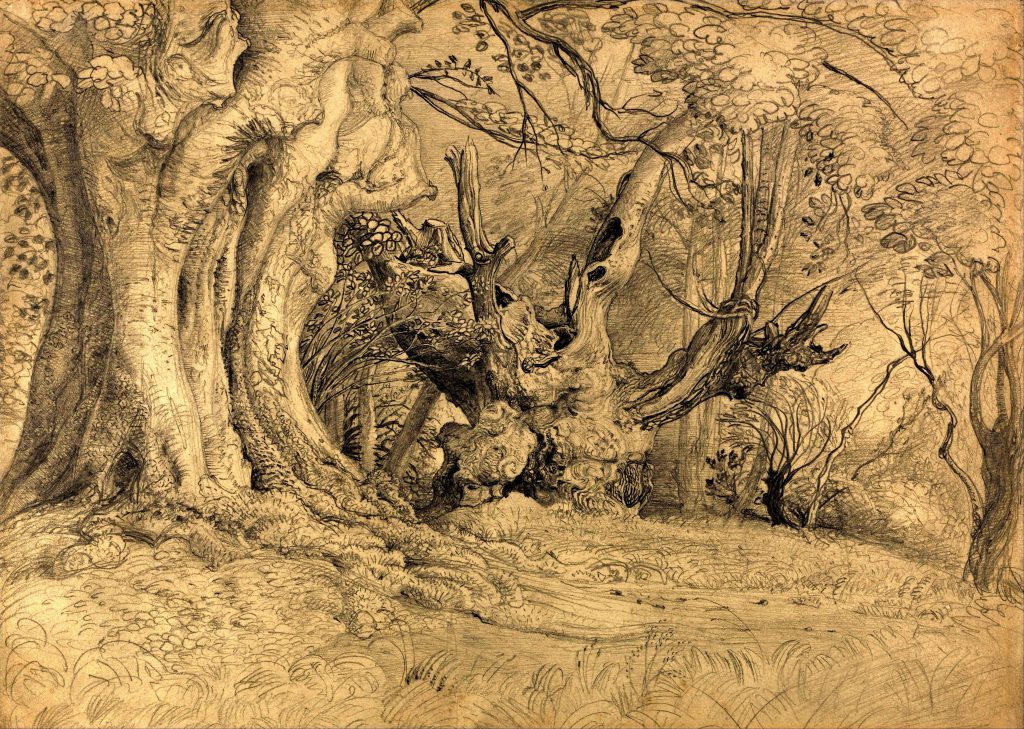
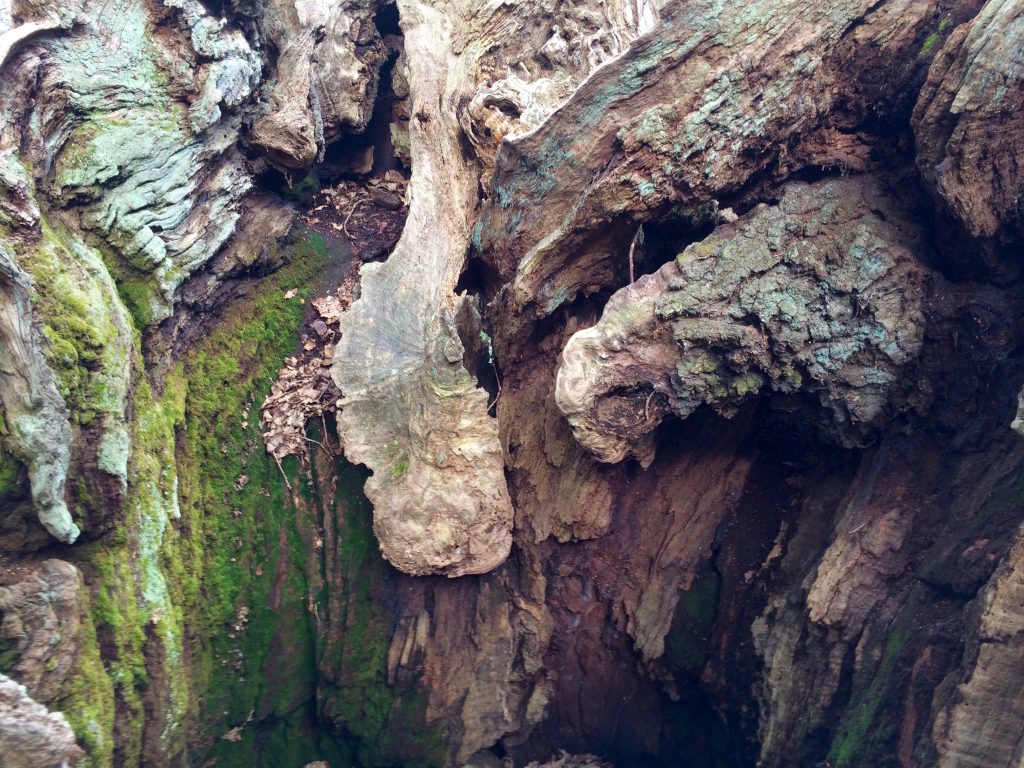
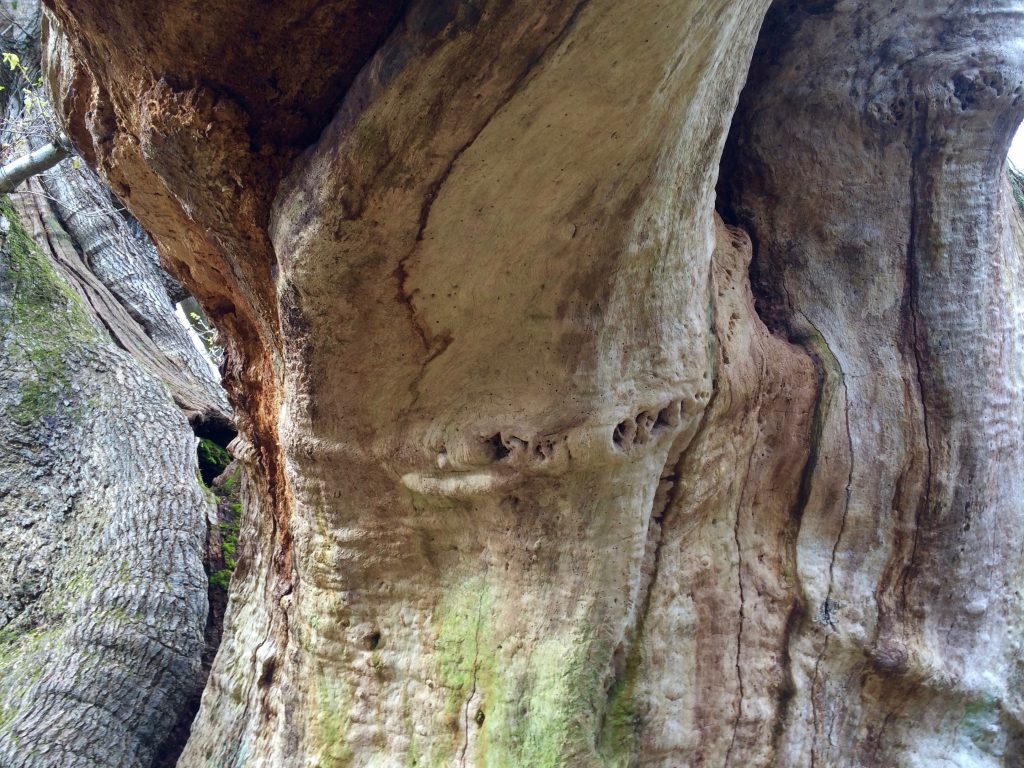
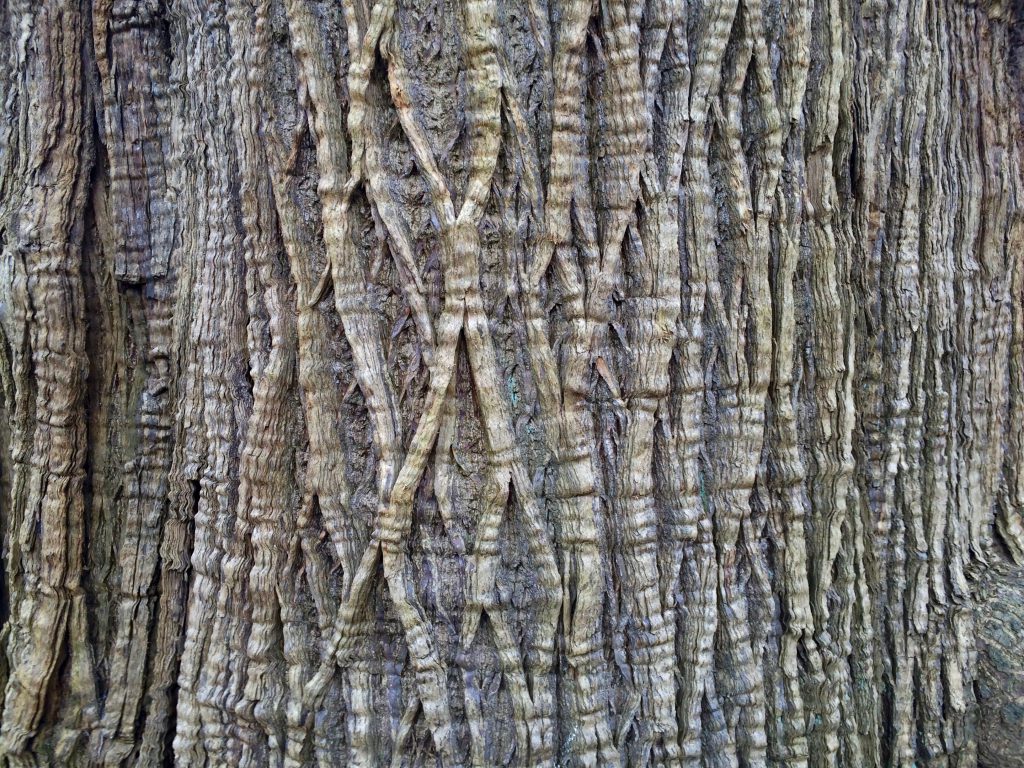
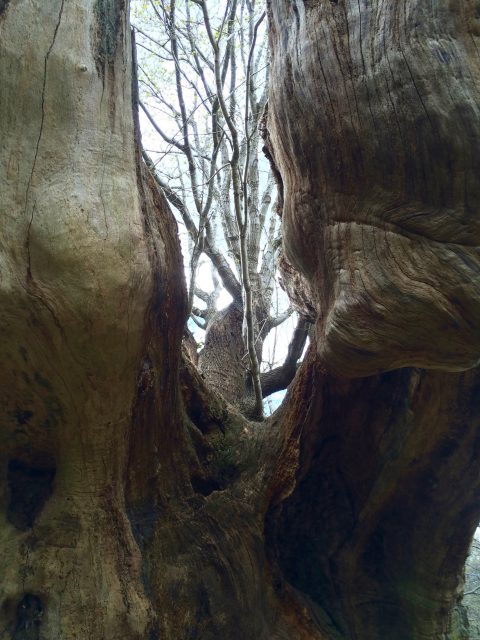
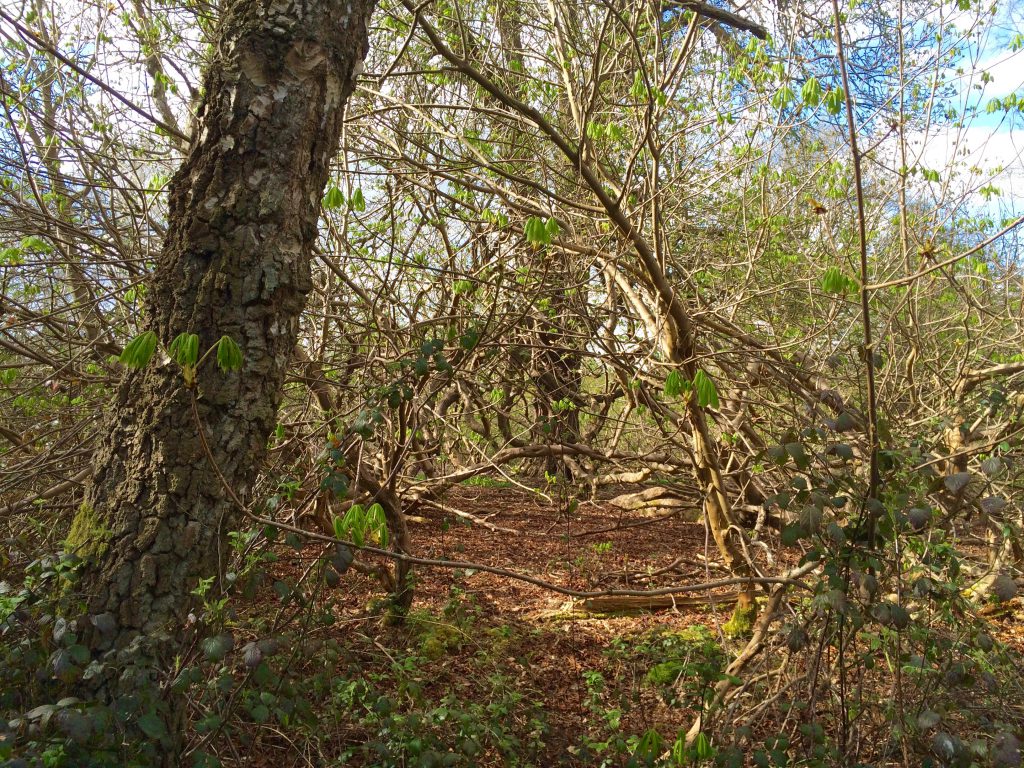
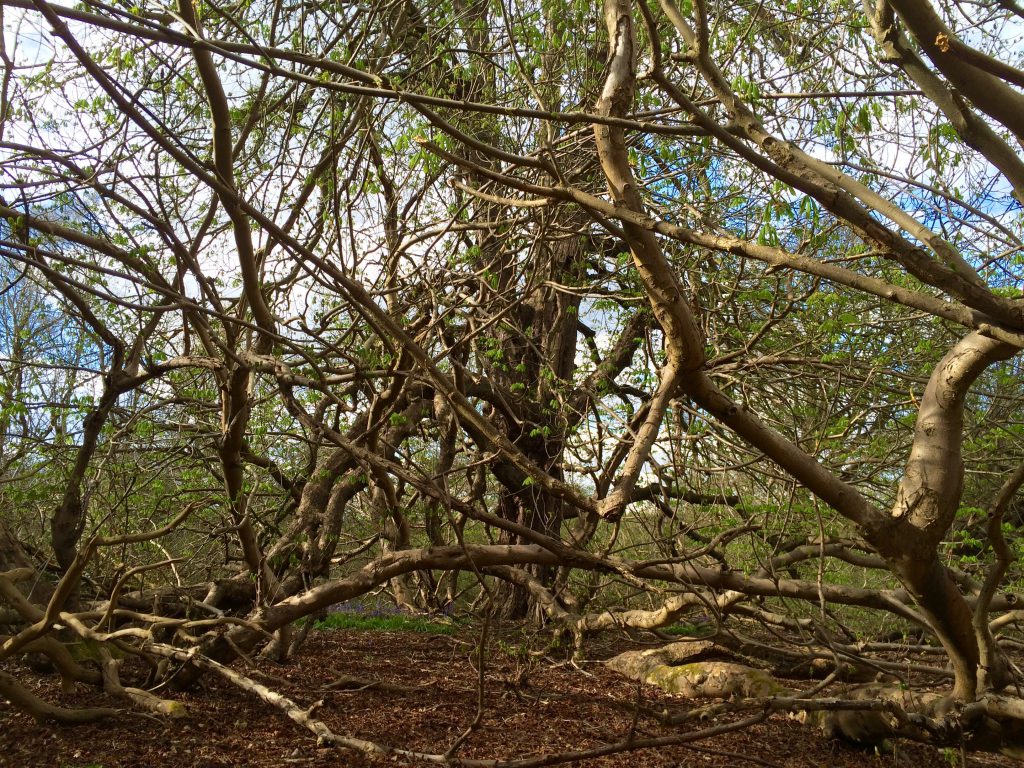


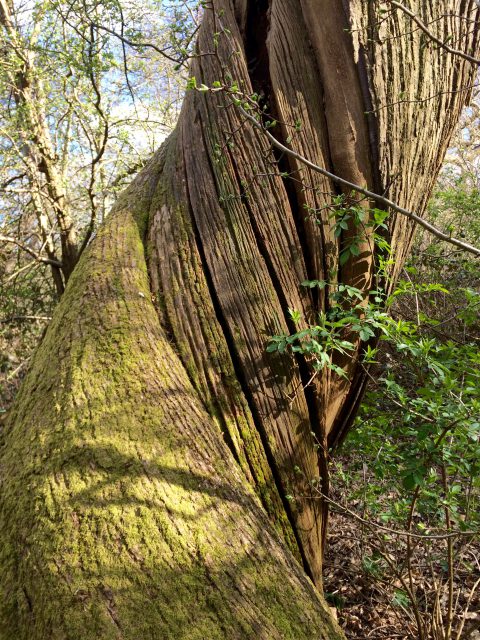
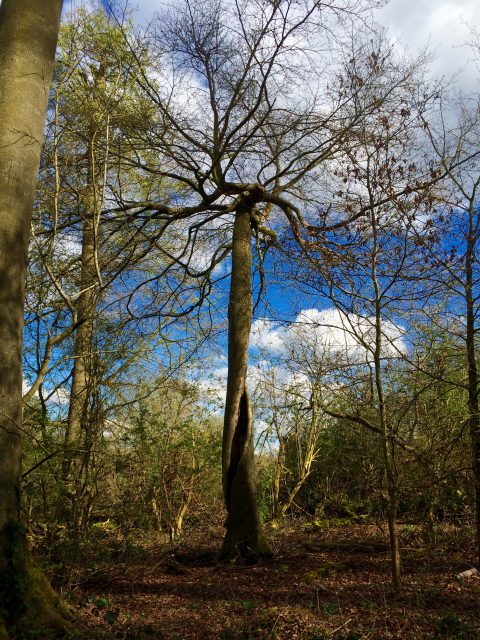
Great walk Chris and a great blog. I haven’t been there for a few years, and must go back. In Shoreham there was, or perhaps still is the Samuel Palmer School of Art. It was run by Franklin White who taught at the Slade. He lived in a magical place.
Wonderful walk & blog. Alas, the school is no more. My Grandfather died in 1975, but Gertrude kept it going until she died in 2011. The house was sold and the new owners have done a remarkable job of restoring it, and have kept the name, “Reedbeds” from the Adelaide, Australia, White’s first home there. Frank, Olga and Gertrude are buried in the St. Peter and St. Paul graveyard, along with my father’s ashes–Franklin White (Dancer). There is, indeed, a magical (dare I say, mystical and visionary?) quality to the Darenth Valley. I enjoyed many good times on the farm as a child. Thank you, Chris for creating this, and Paul for remembering FW and the school.
Thanks for terrific juxtaposition of words, paintings and photographs.
This is fantastic. Thank you from a life long (ish) Palmer fan.
Just visited Shoreham 17.9.20. An ambition fulfilled see this gem. My preoccupation’s been THE LONELY TOWER in the etchings, and the association with Milton and the ‘midnight hour’. Thought there would be a tower in the scene. What I saw was enchanting. The church, the houses, the trees, a little girl drying her feet by the river, a stone’s throw from Palmer’s house….
This was a happy reminder of some things seen on a September afternoon – thank you